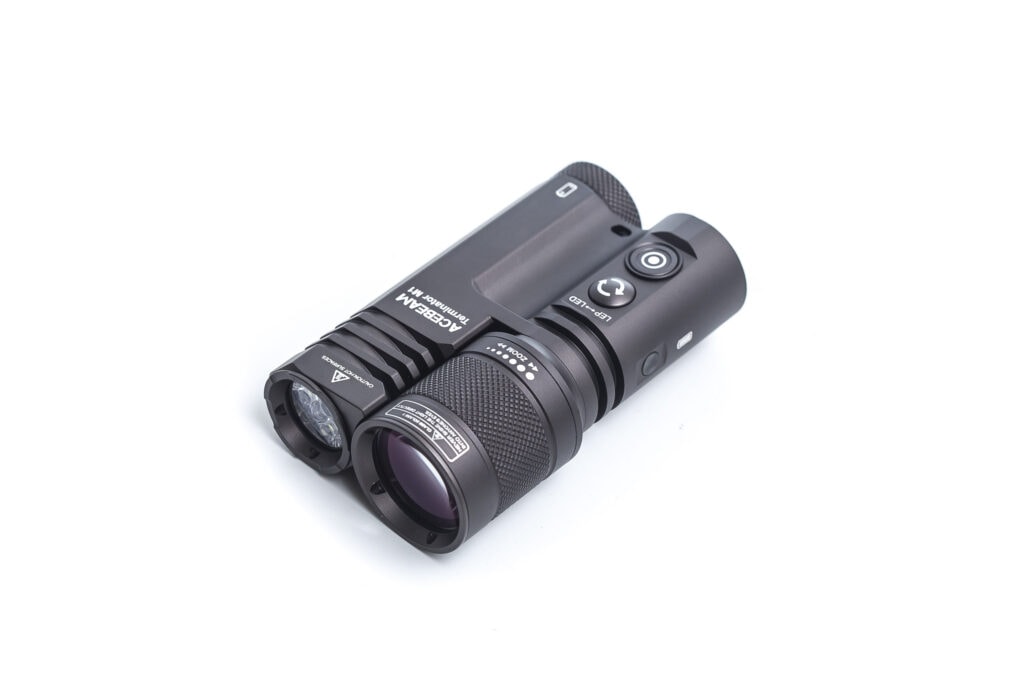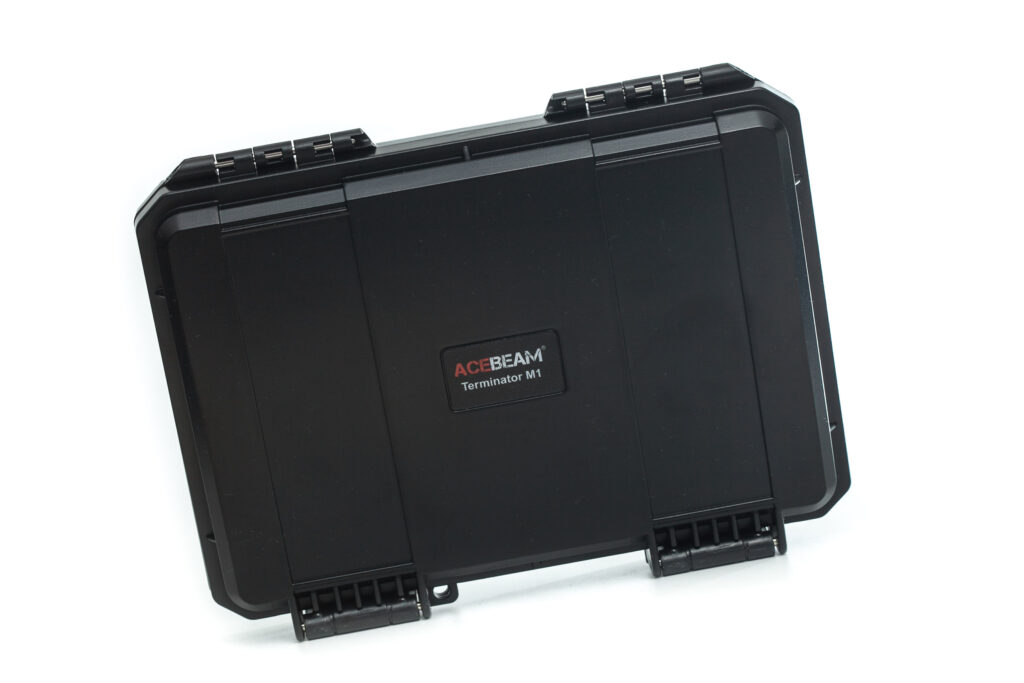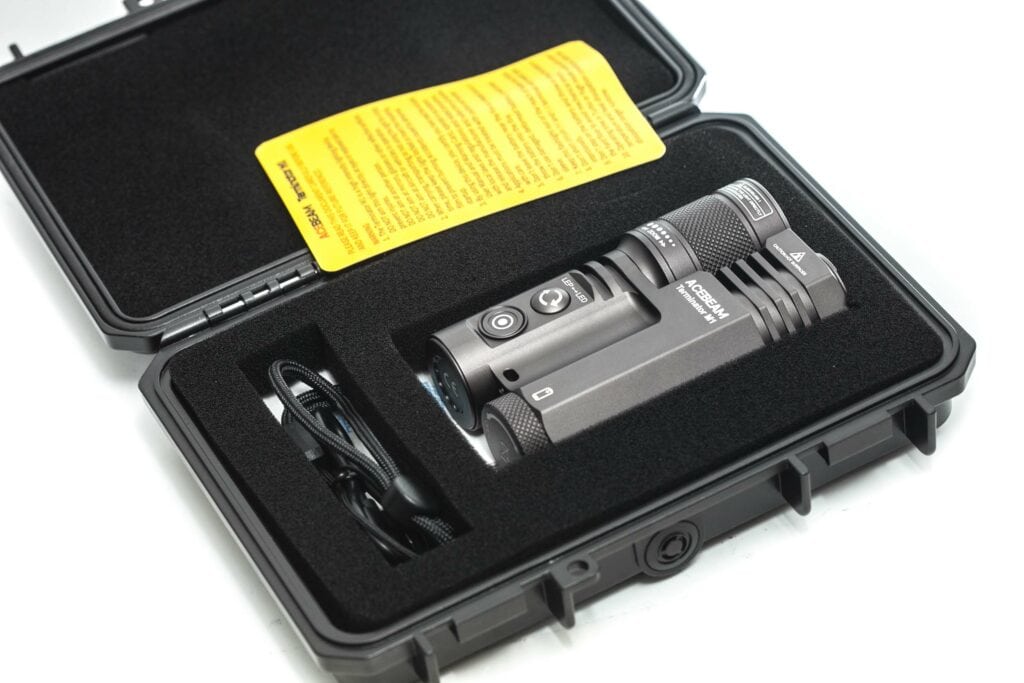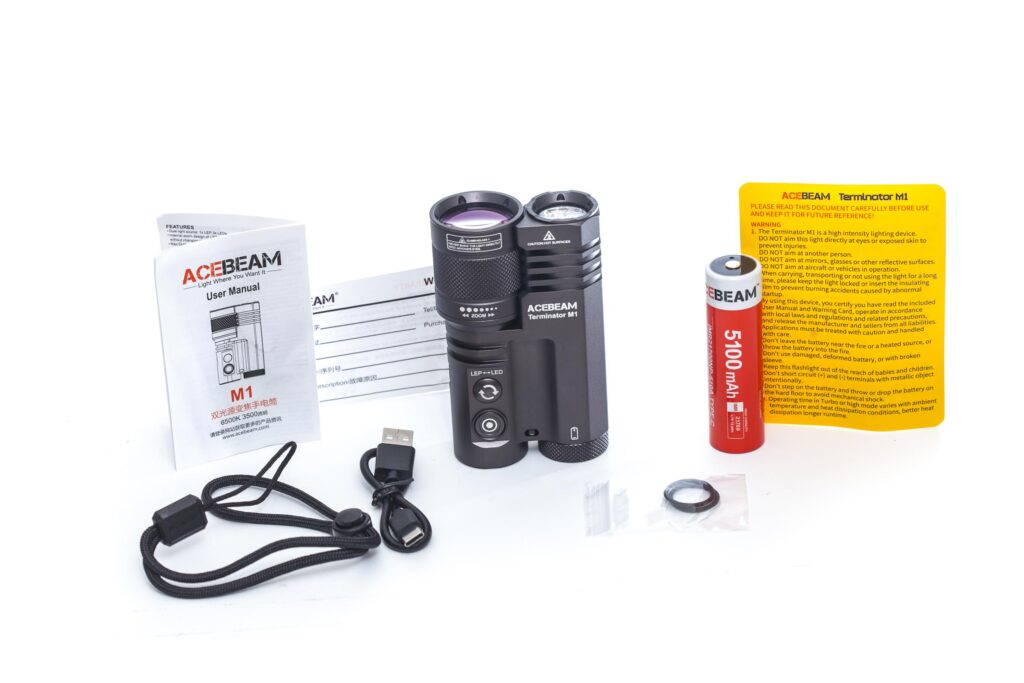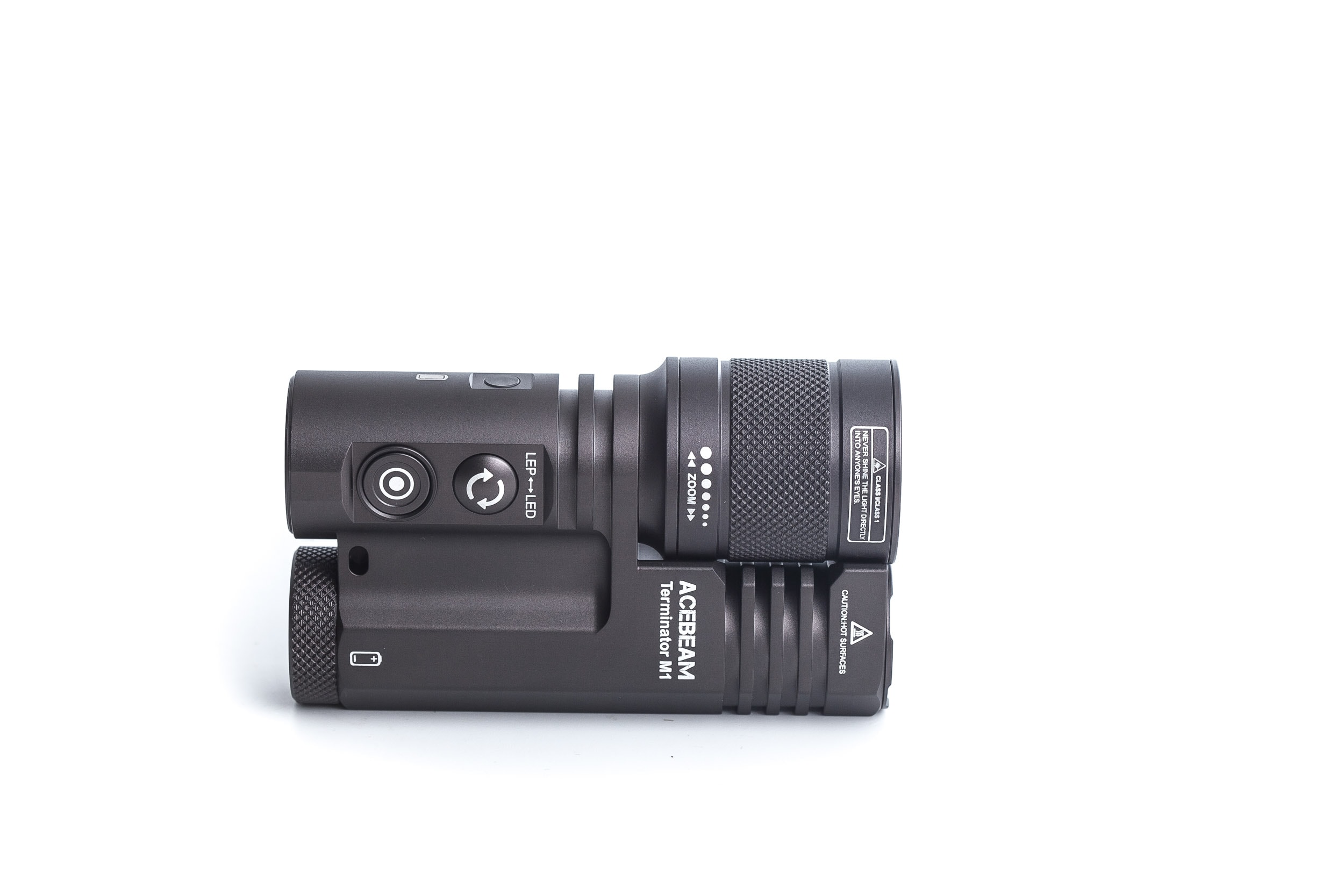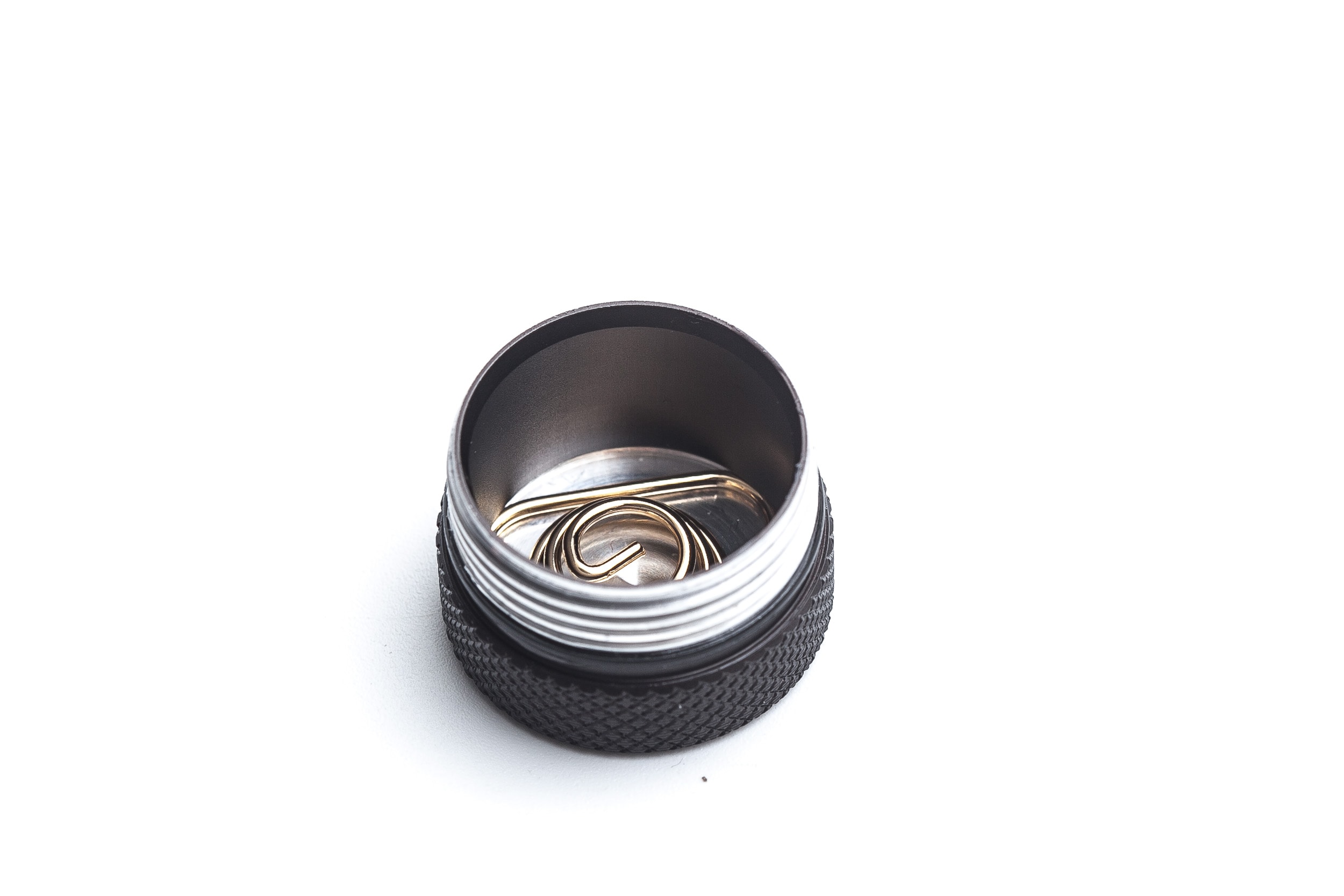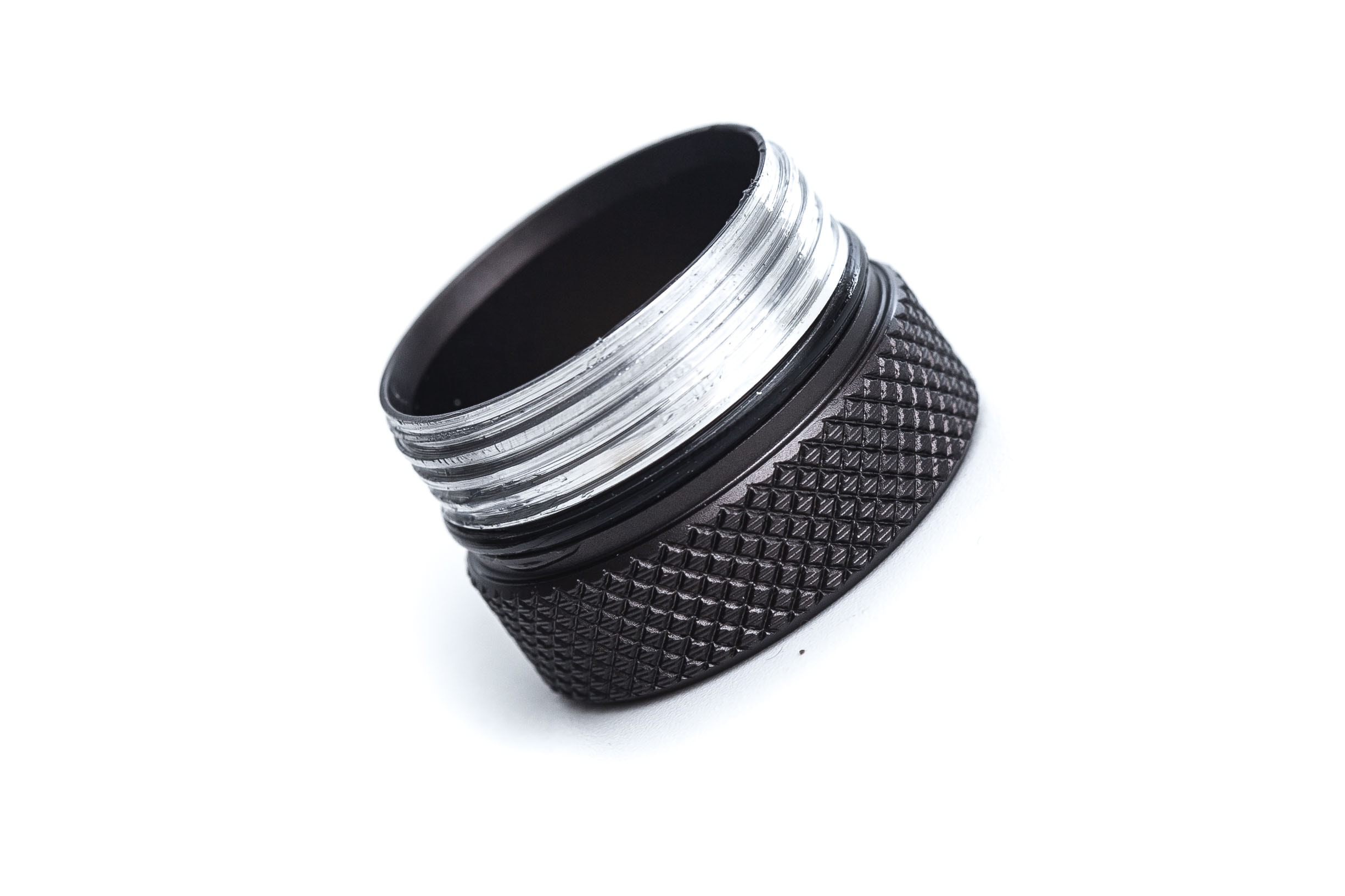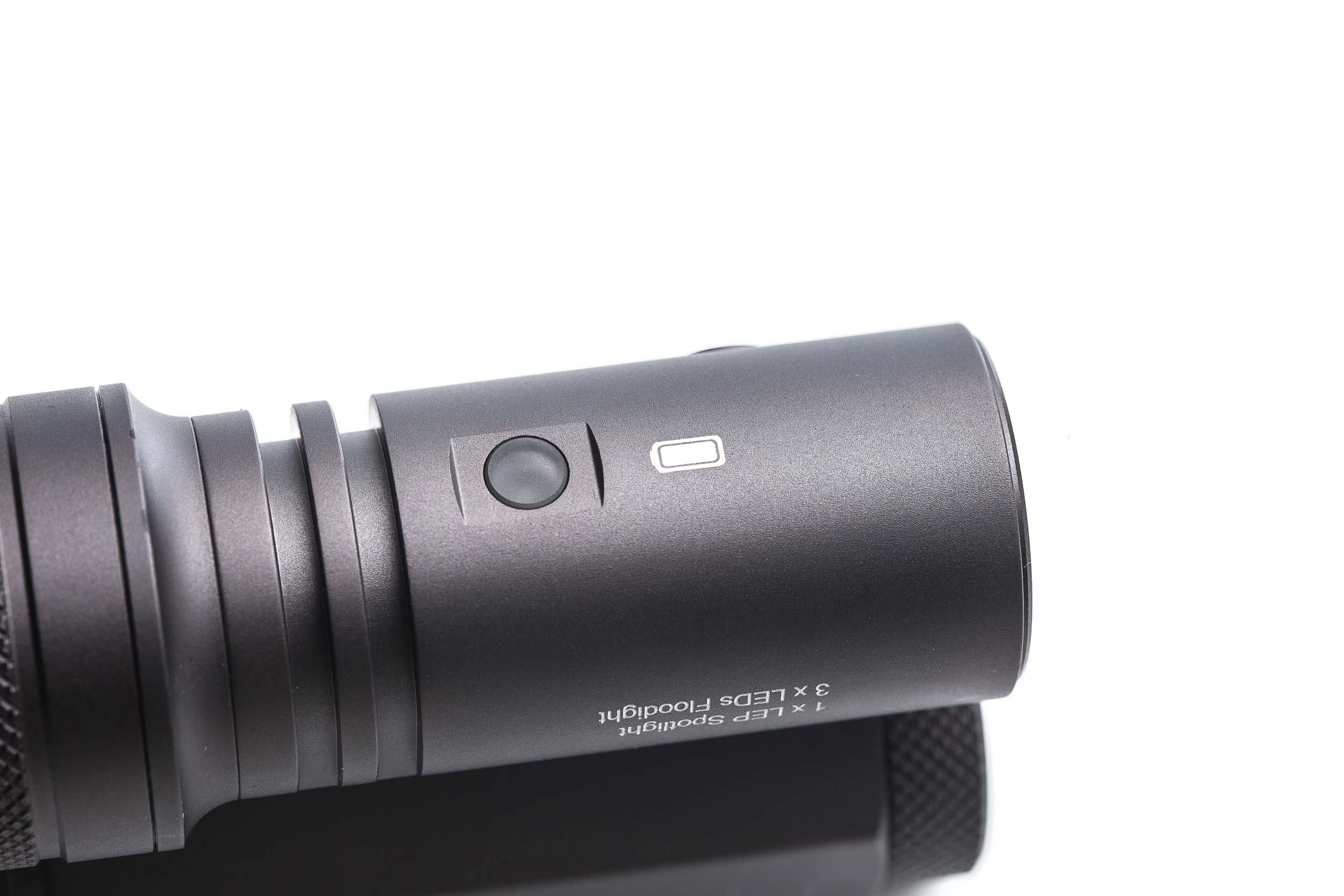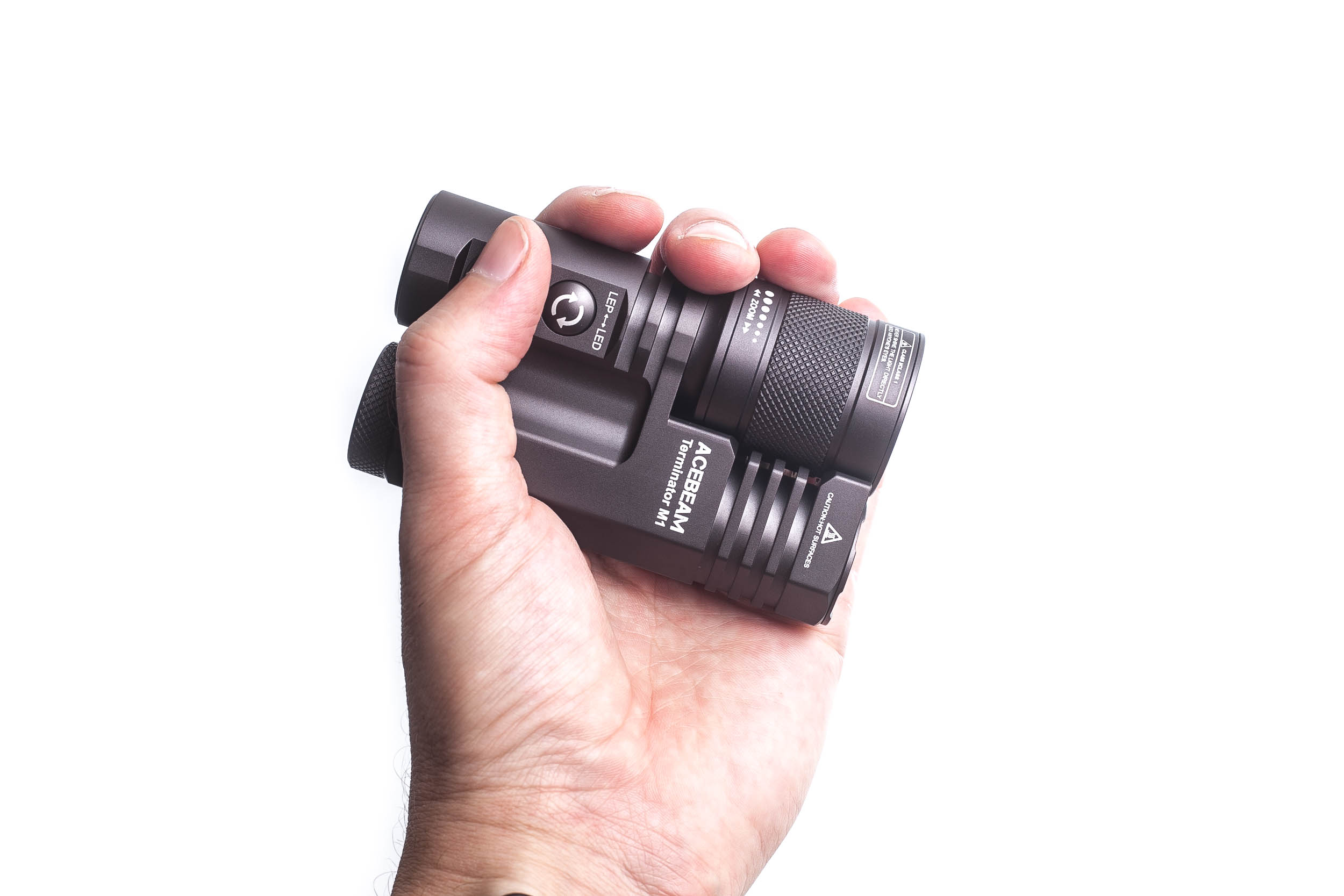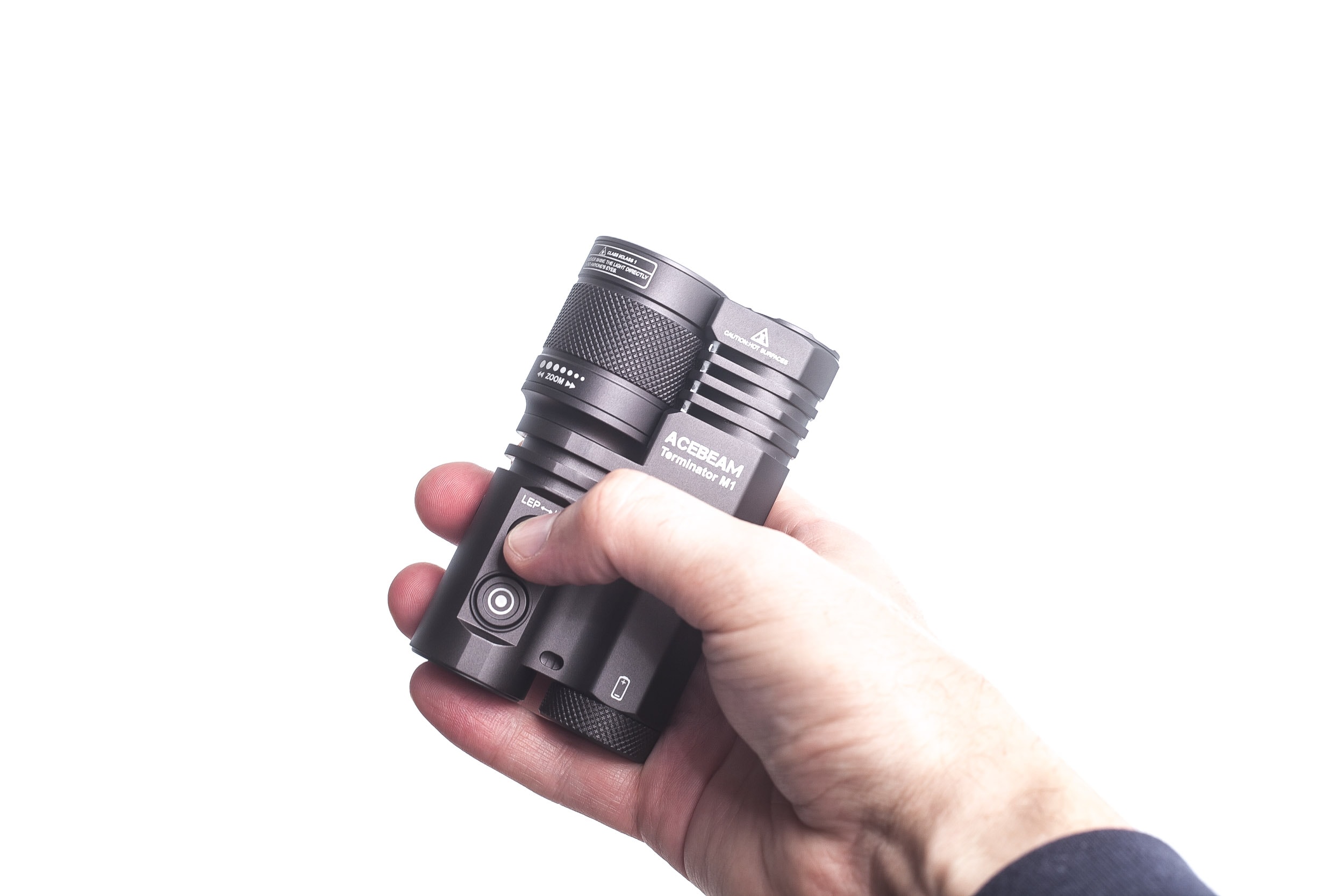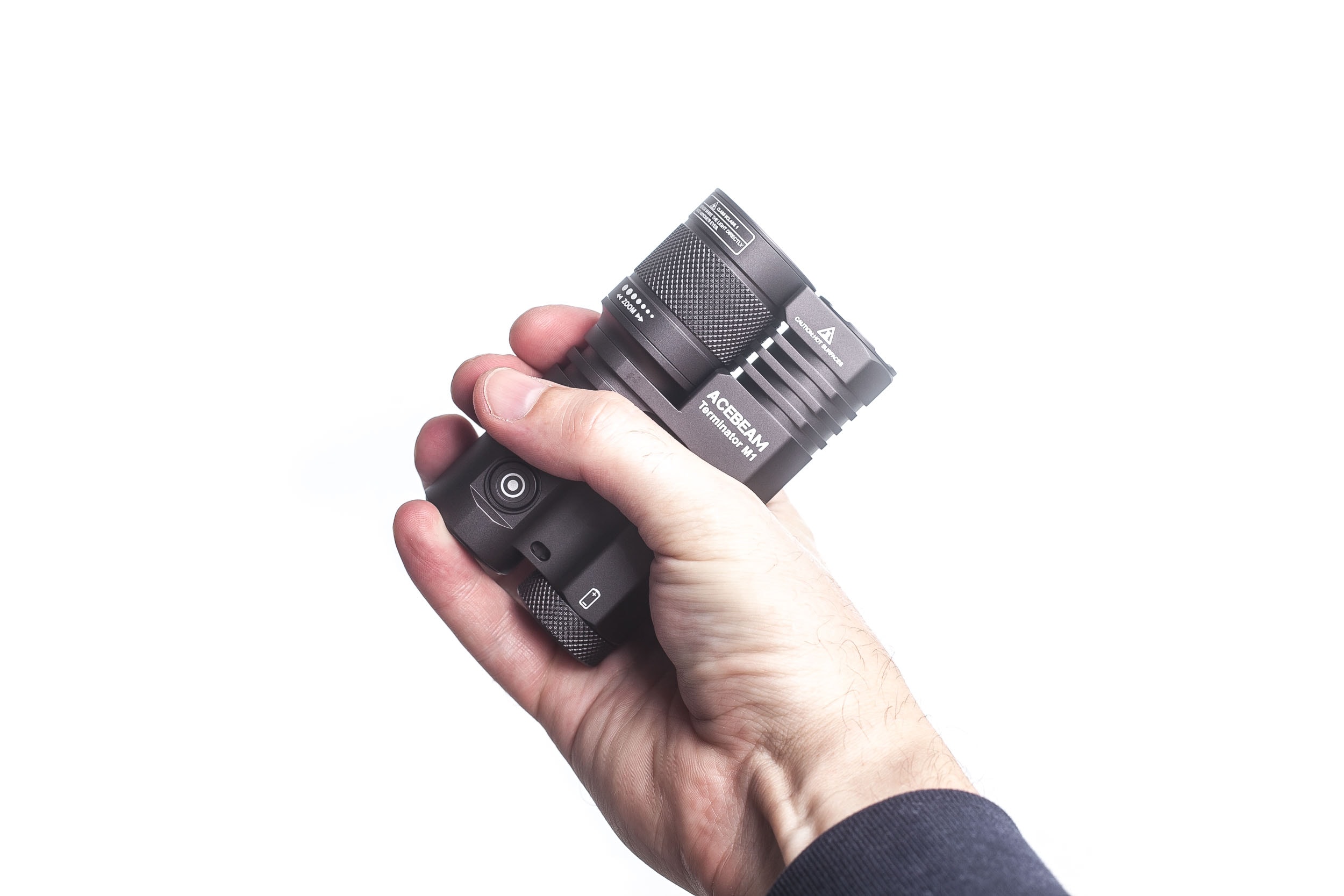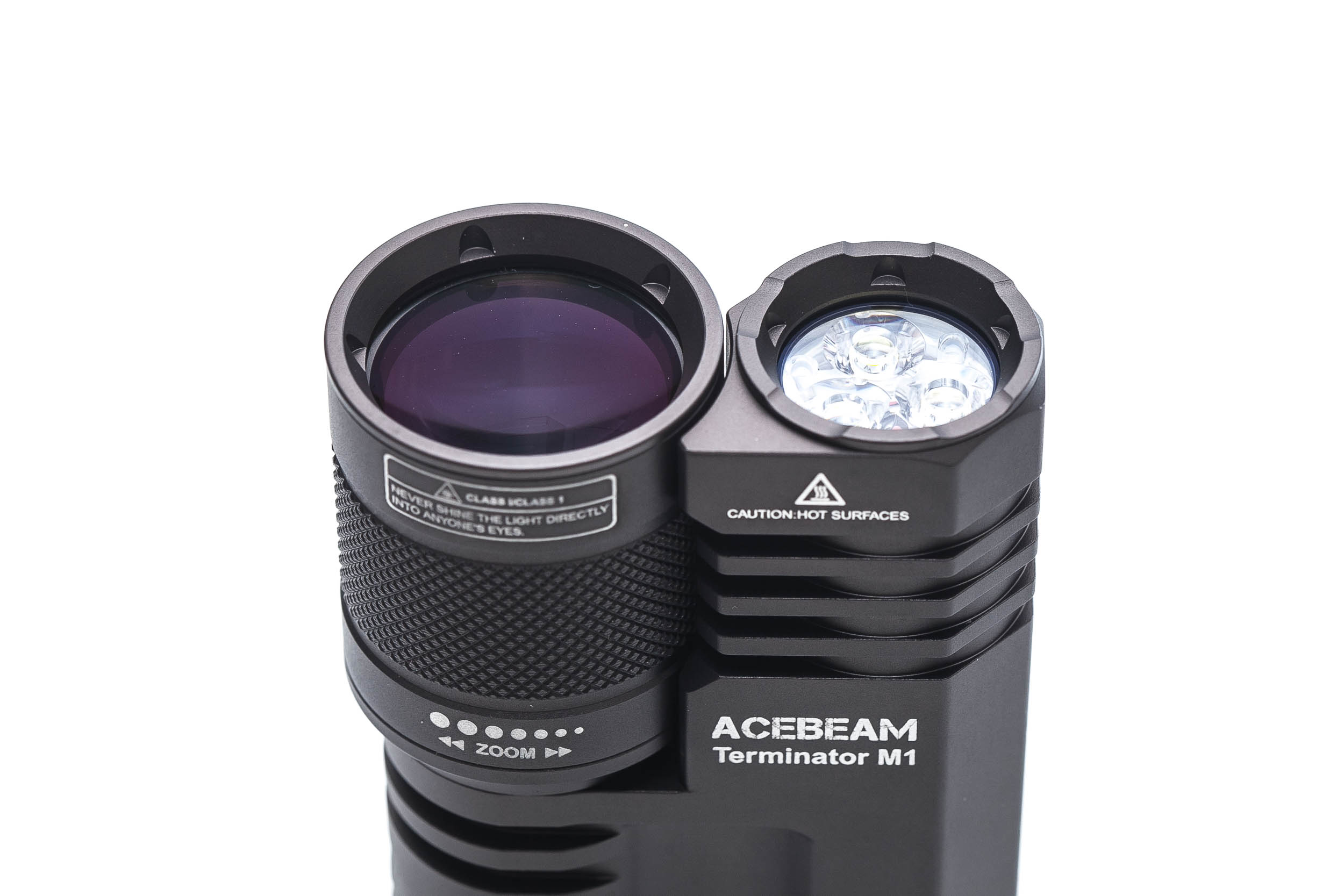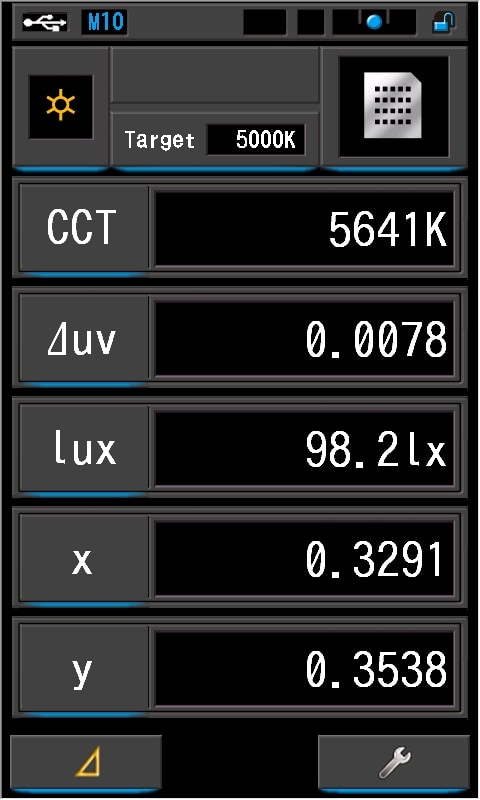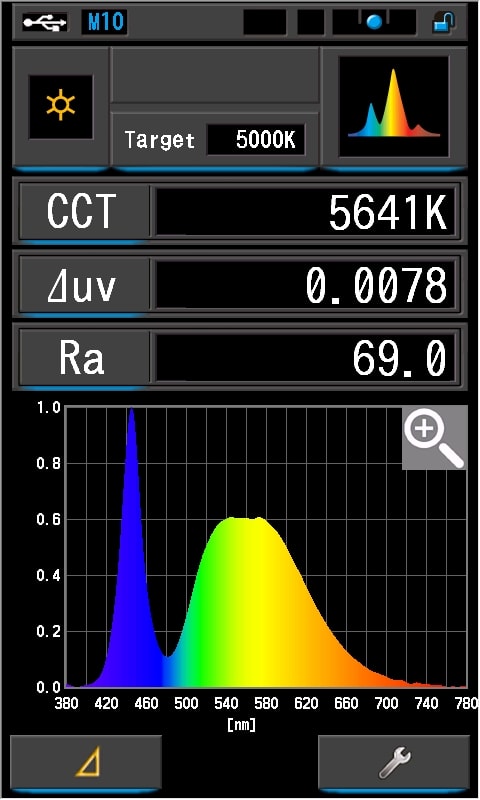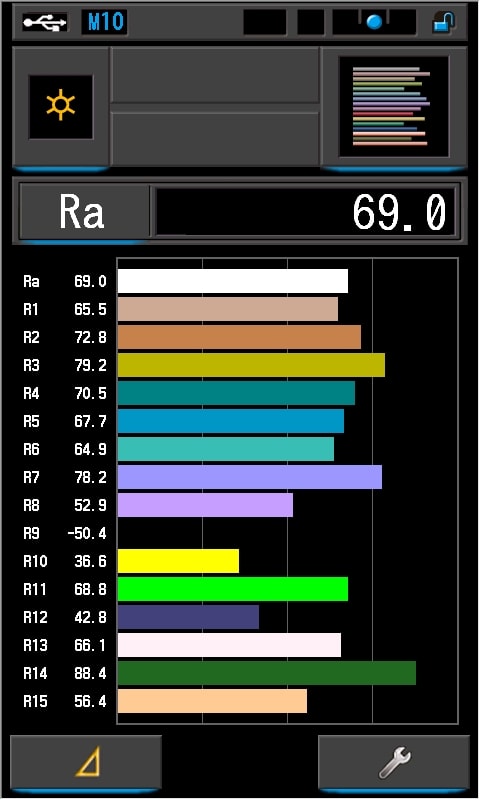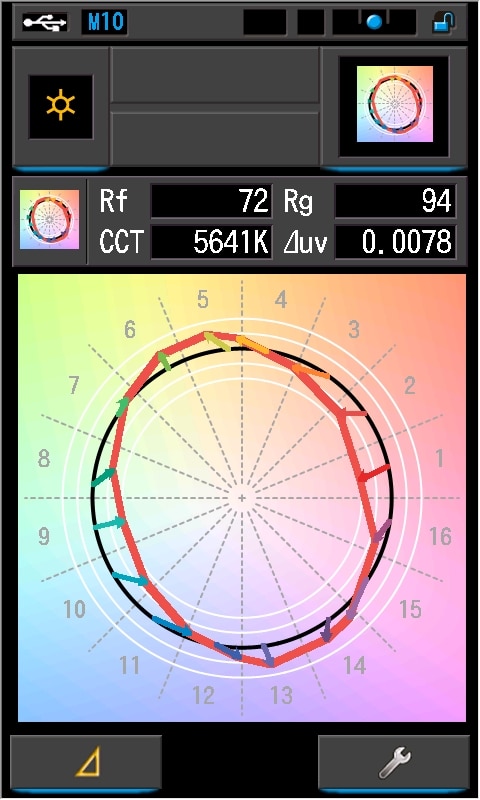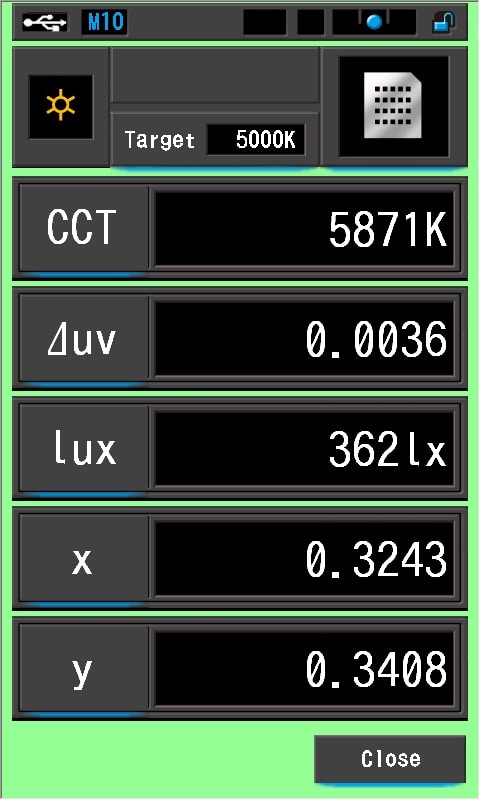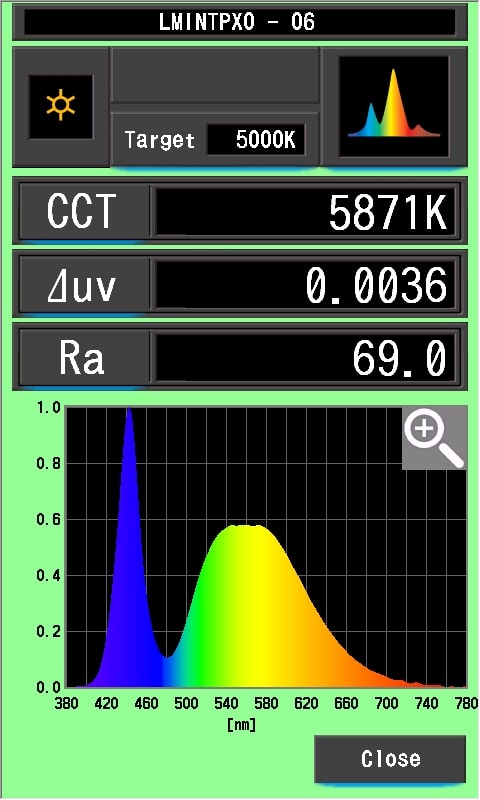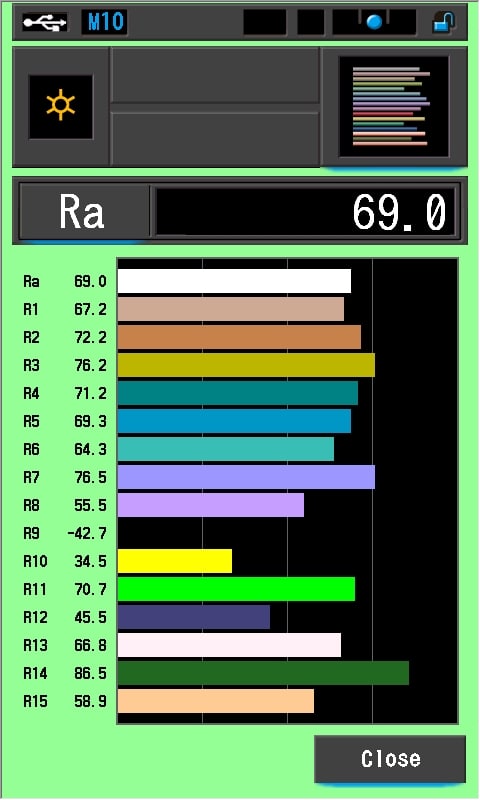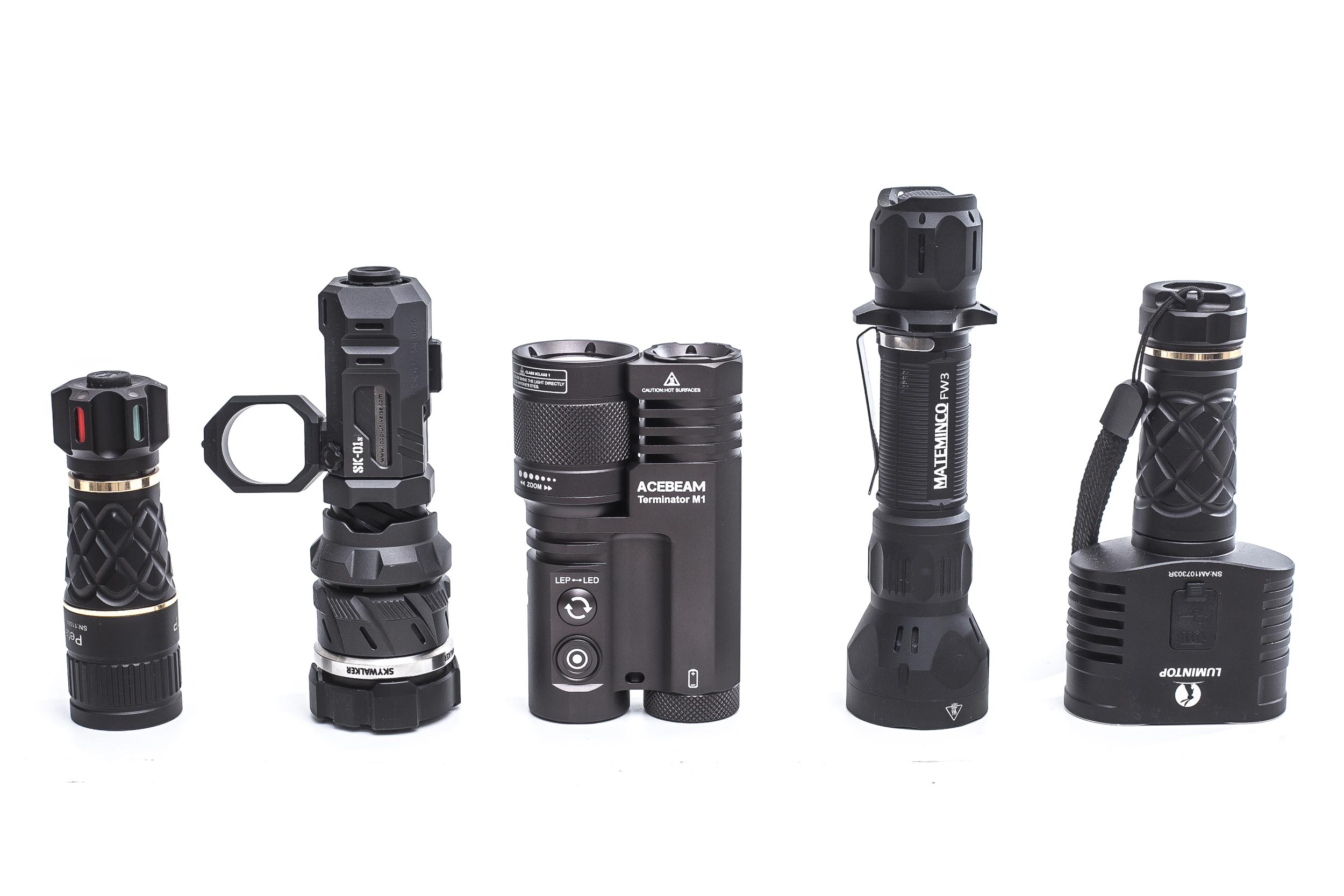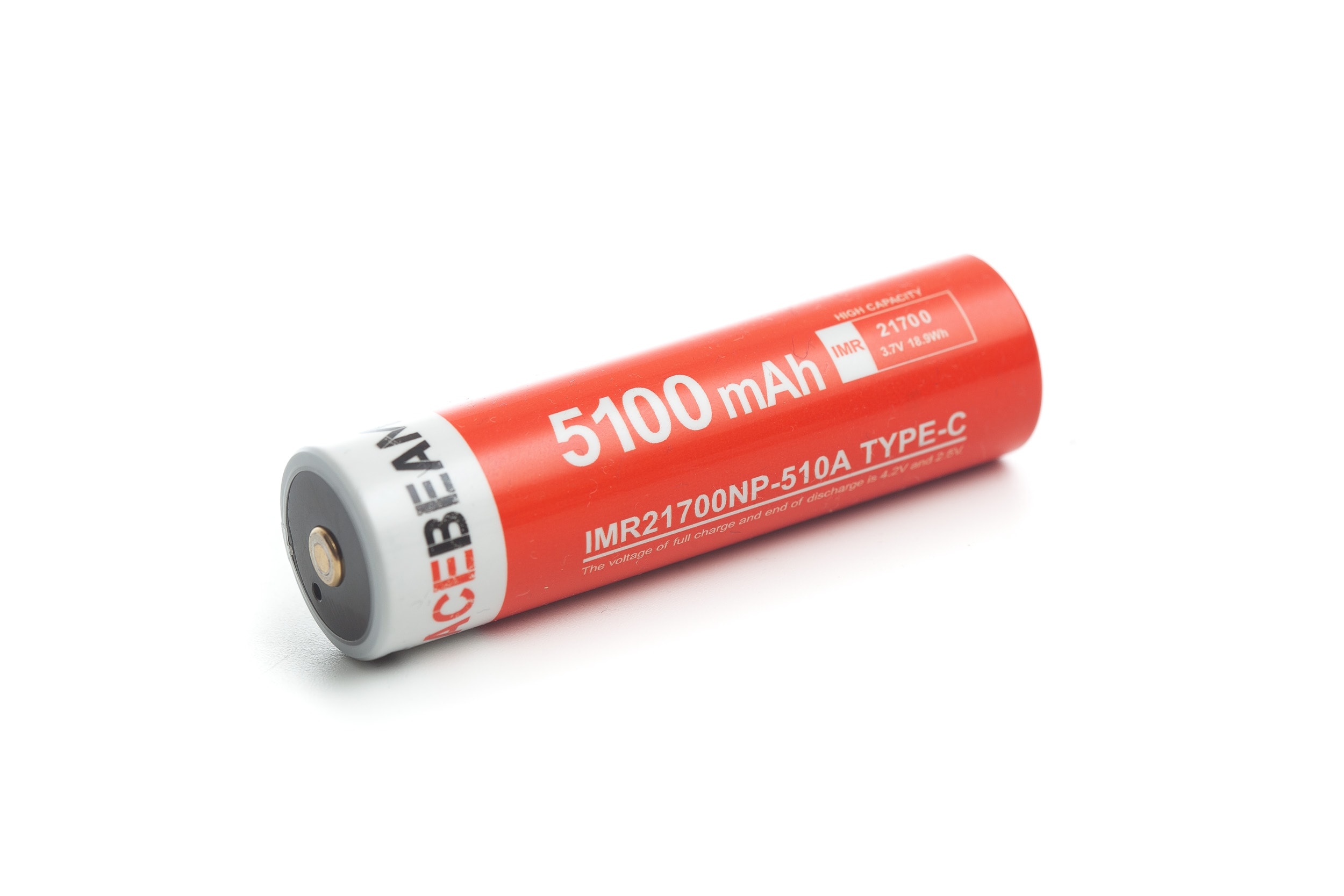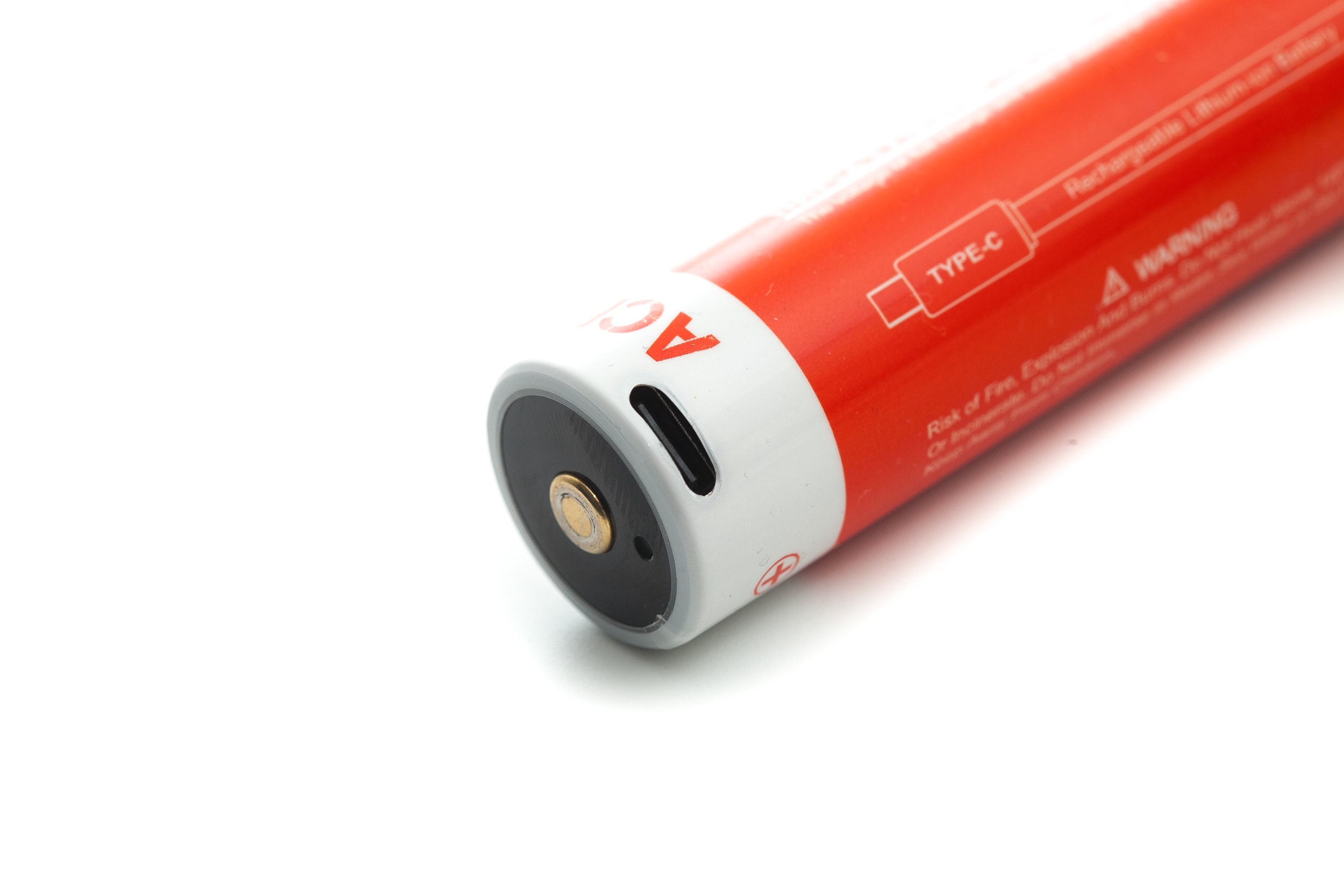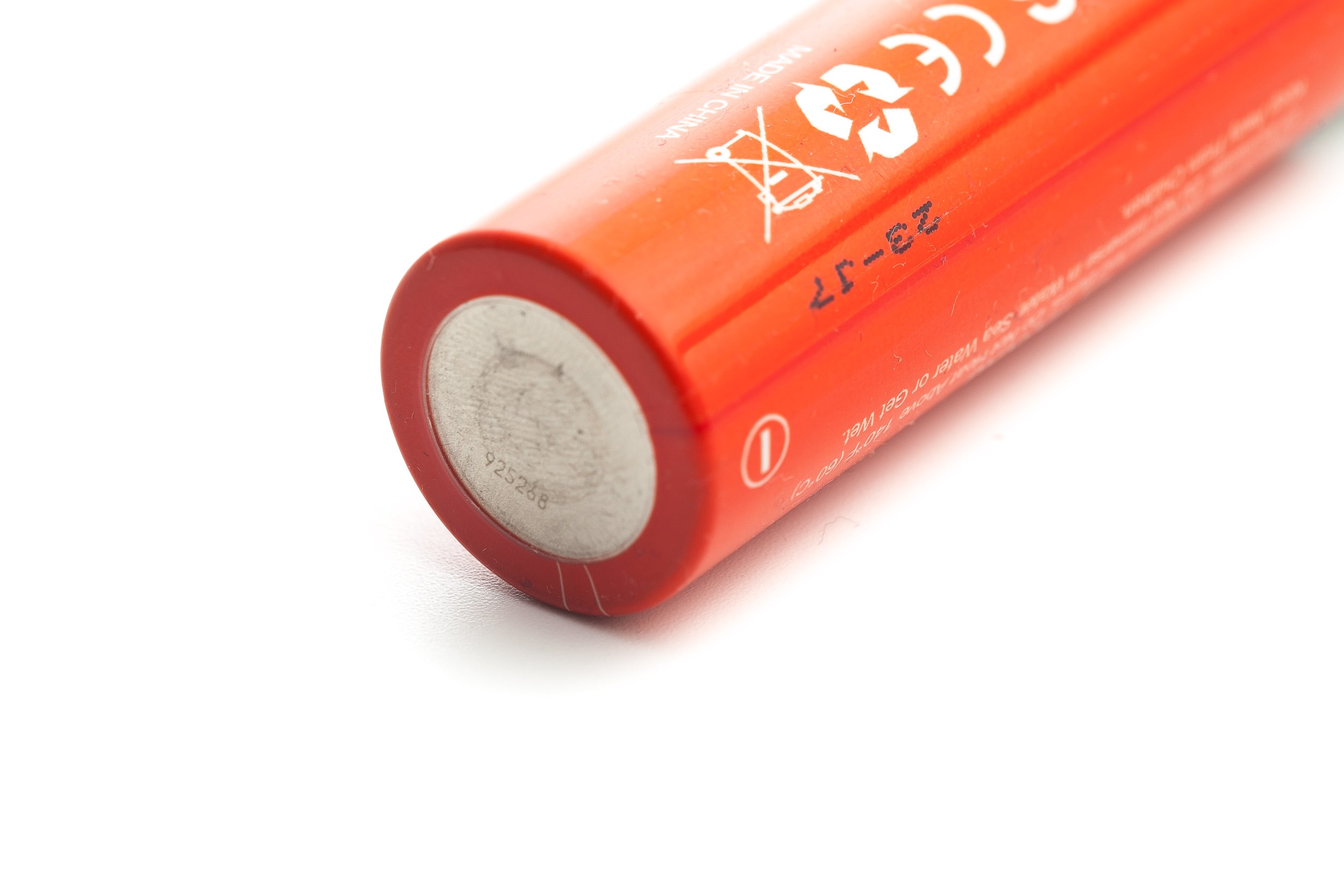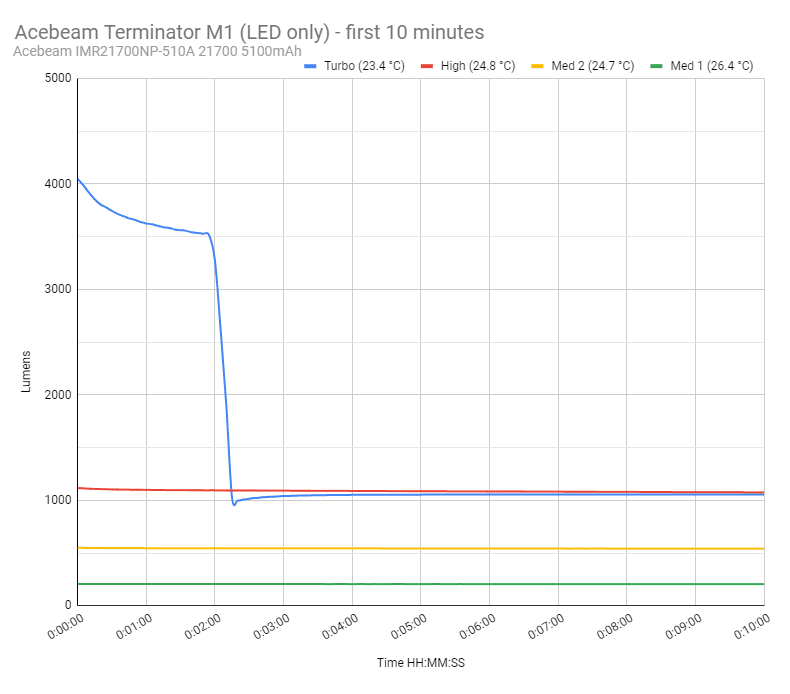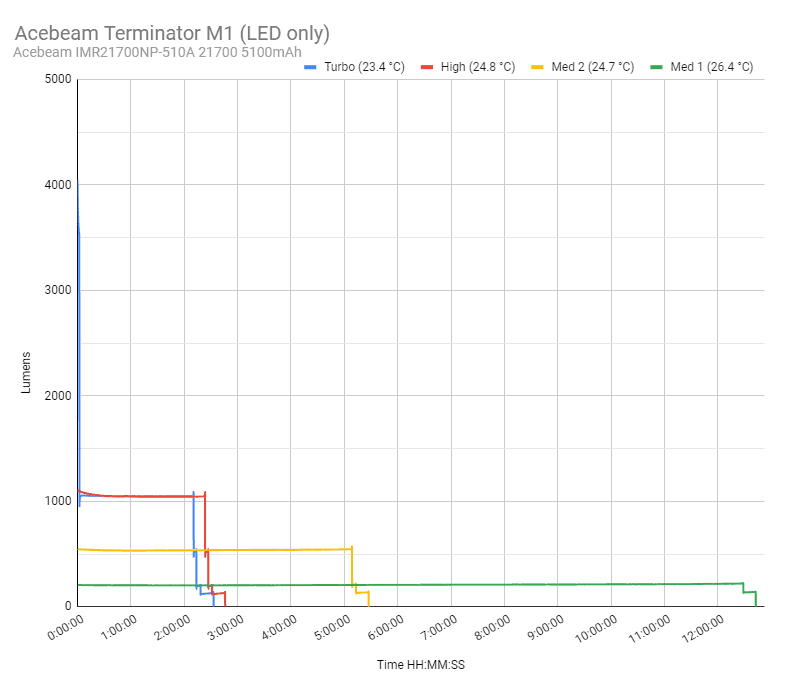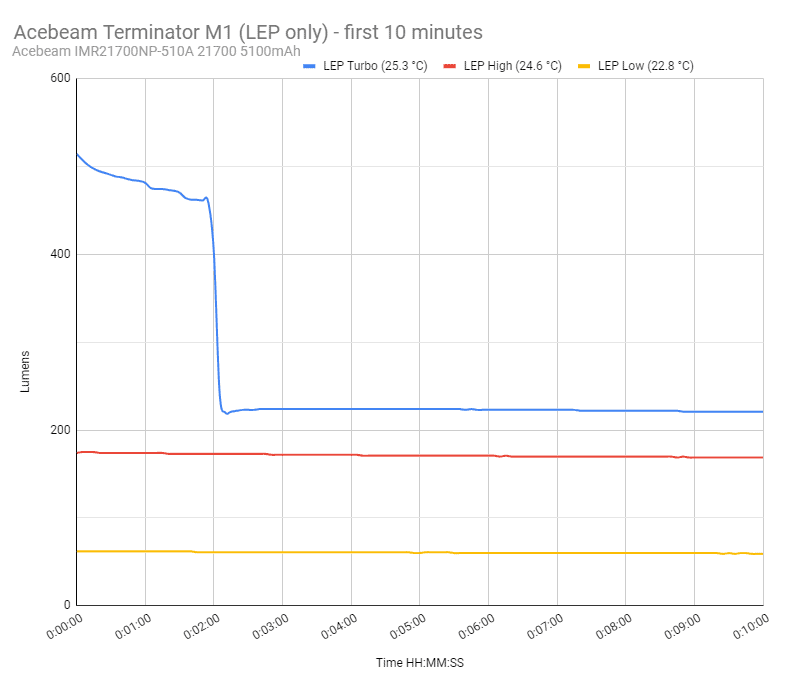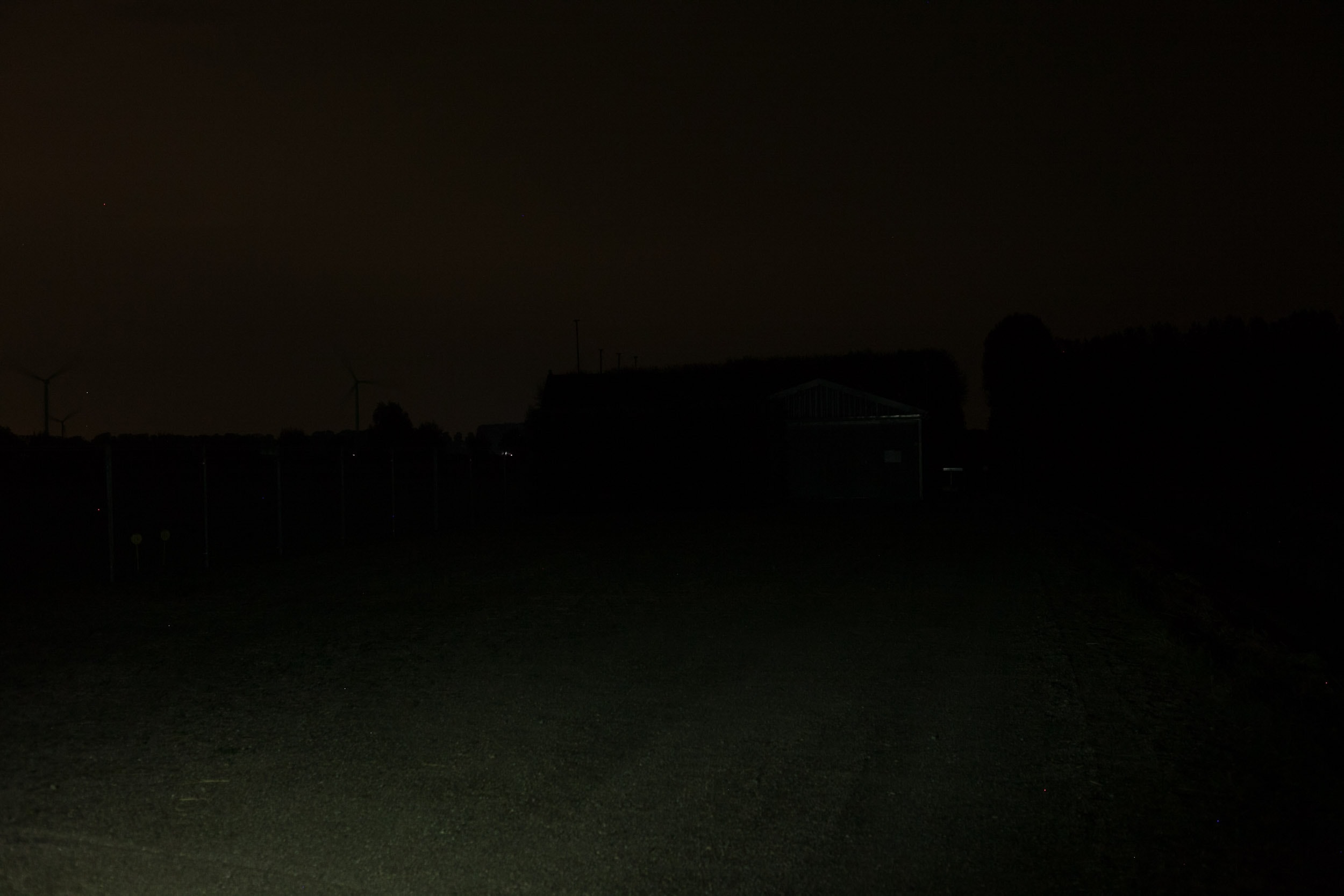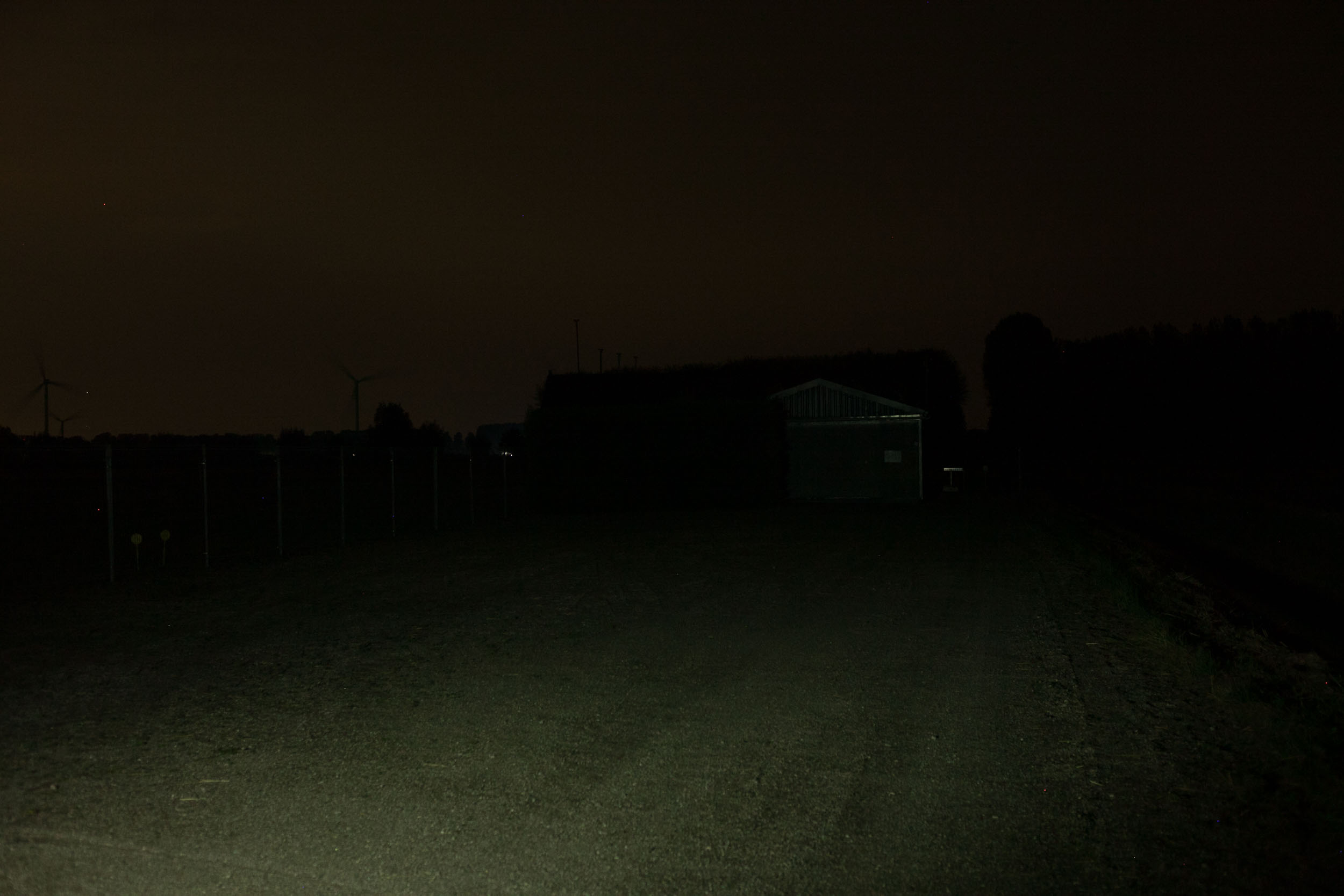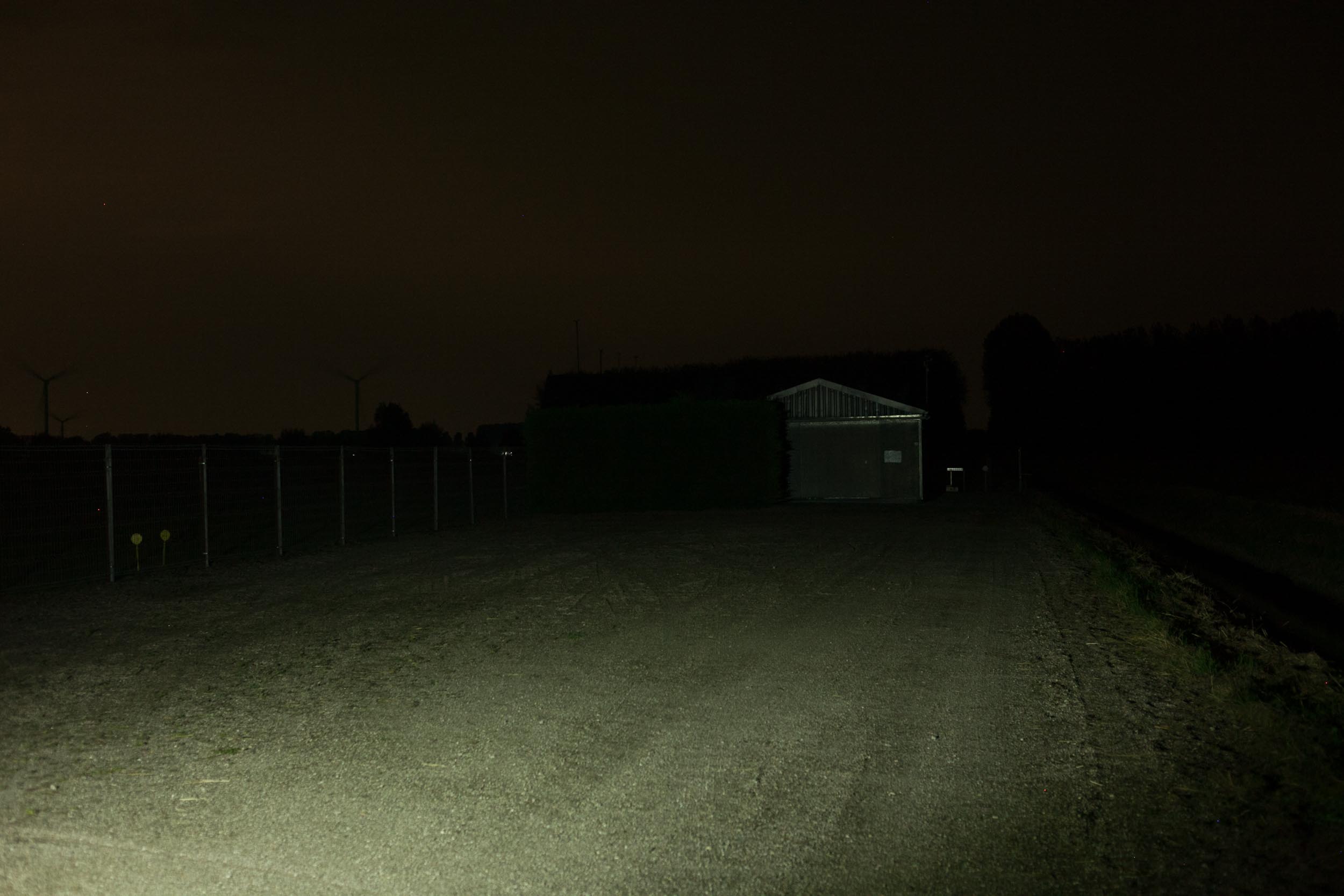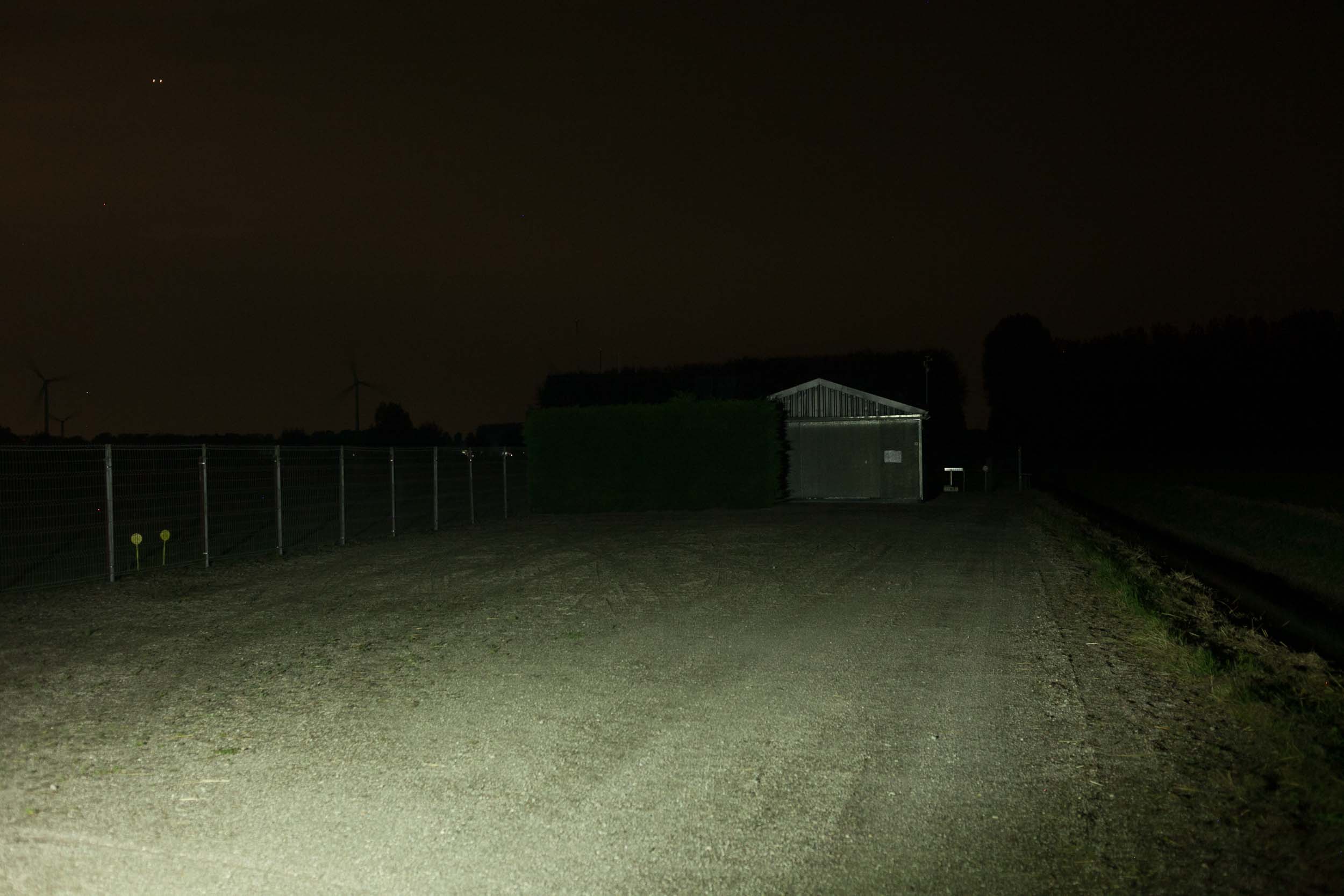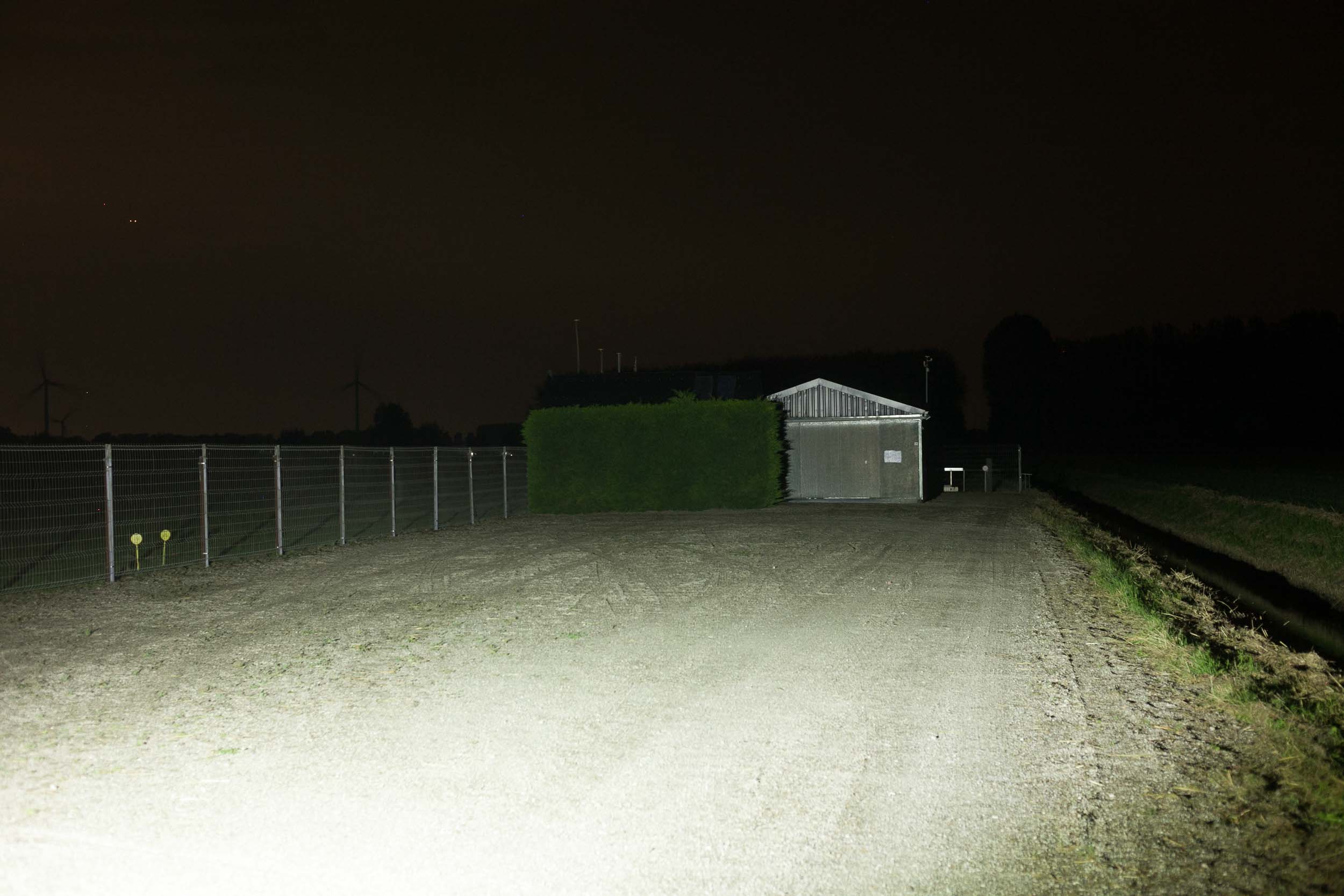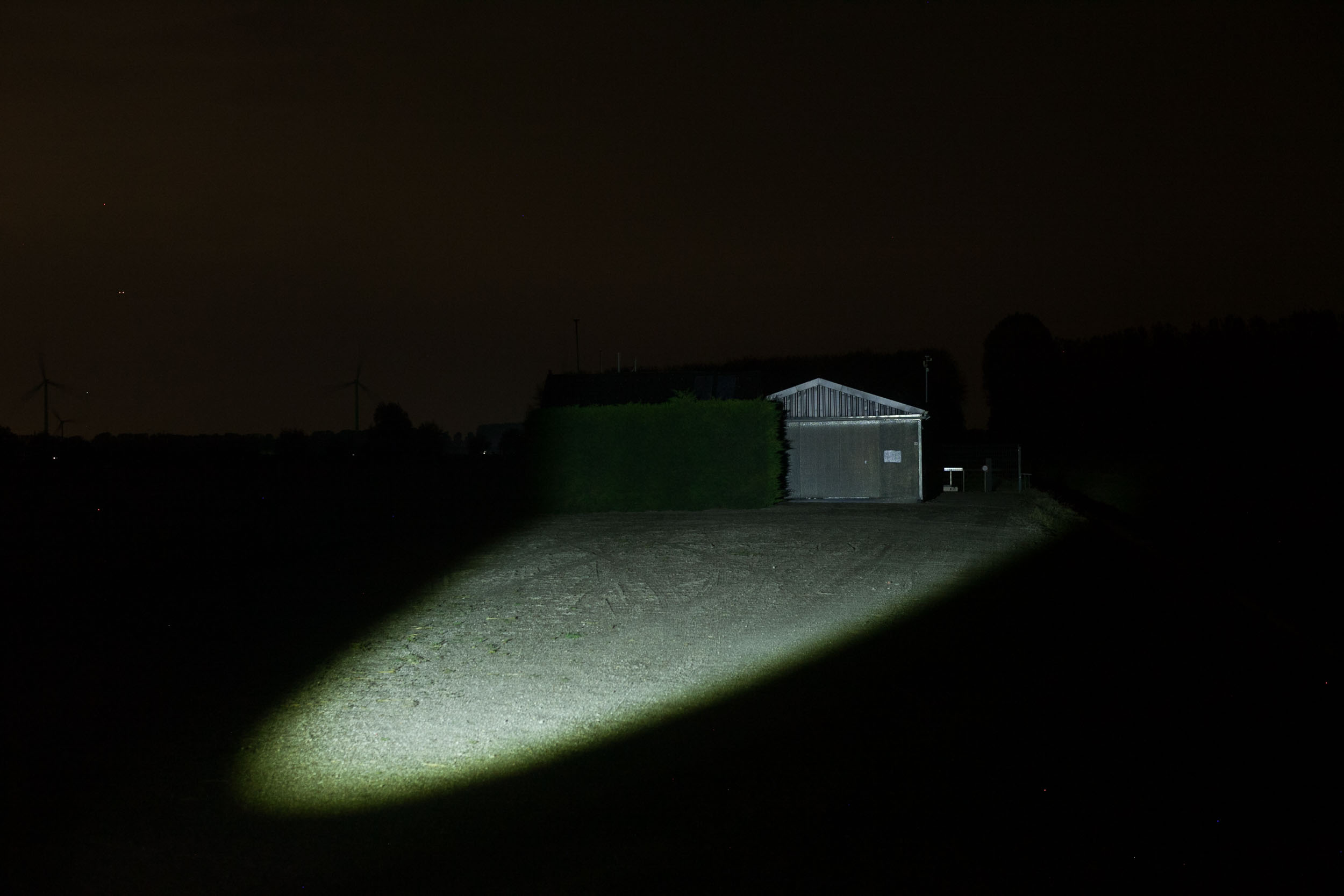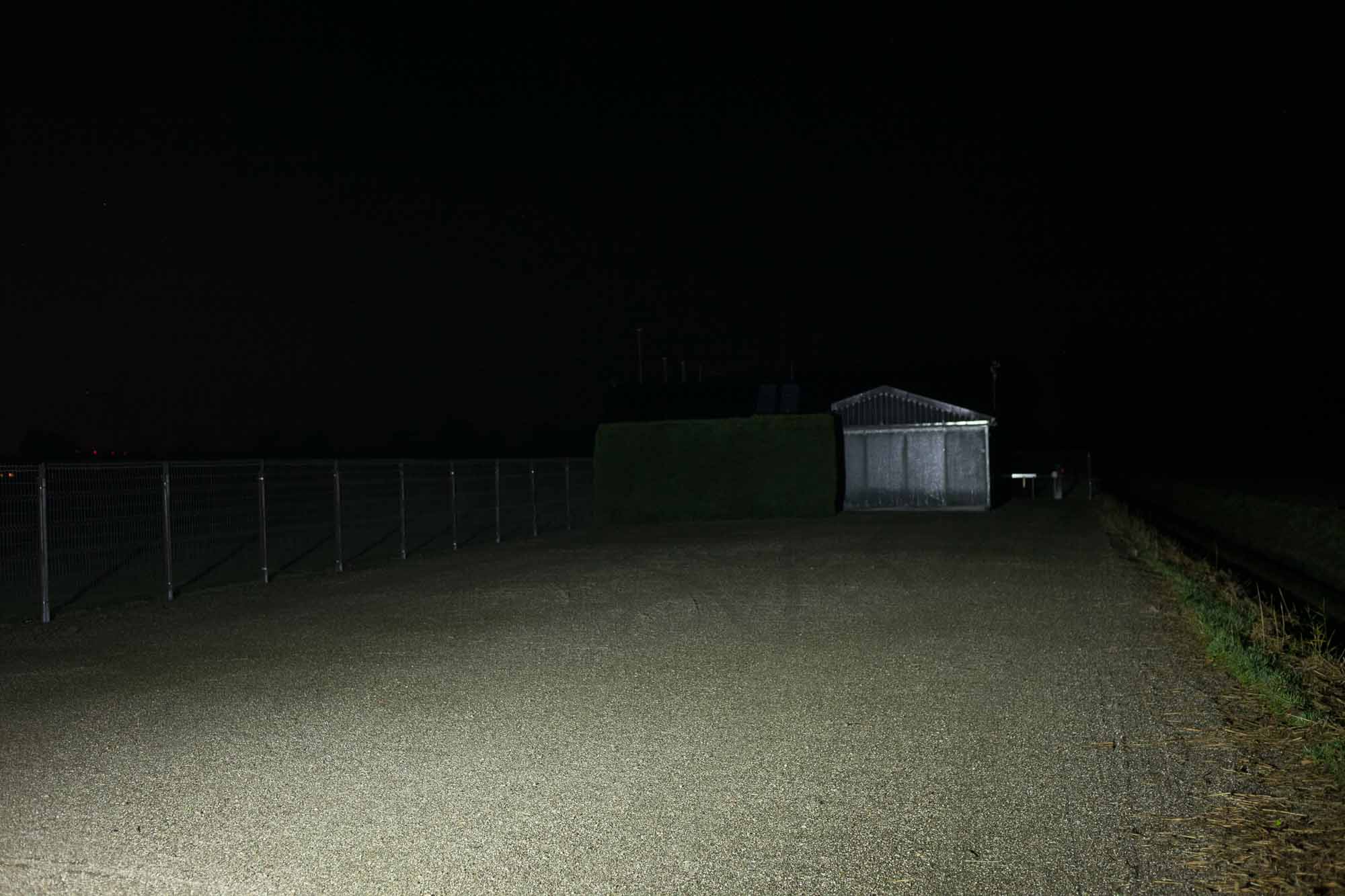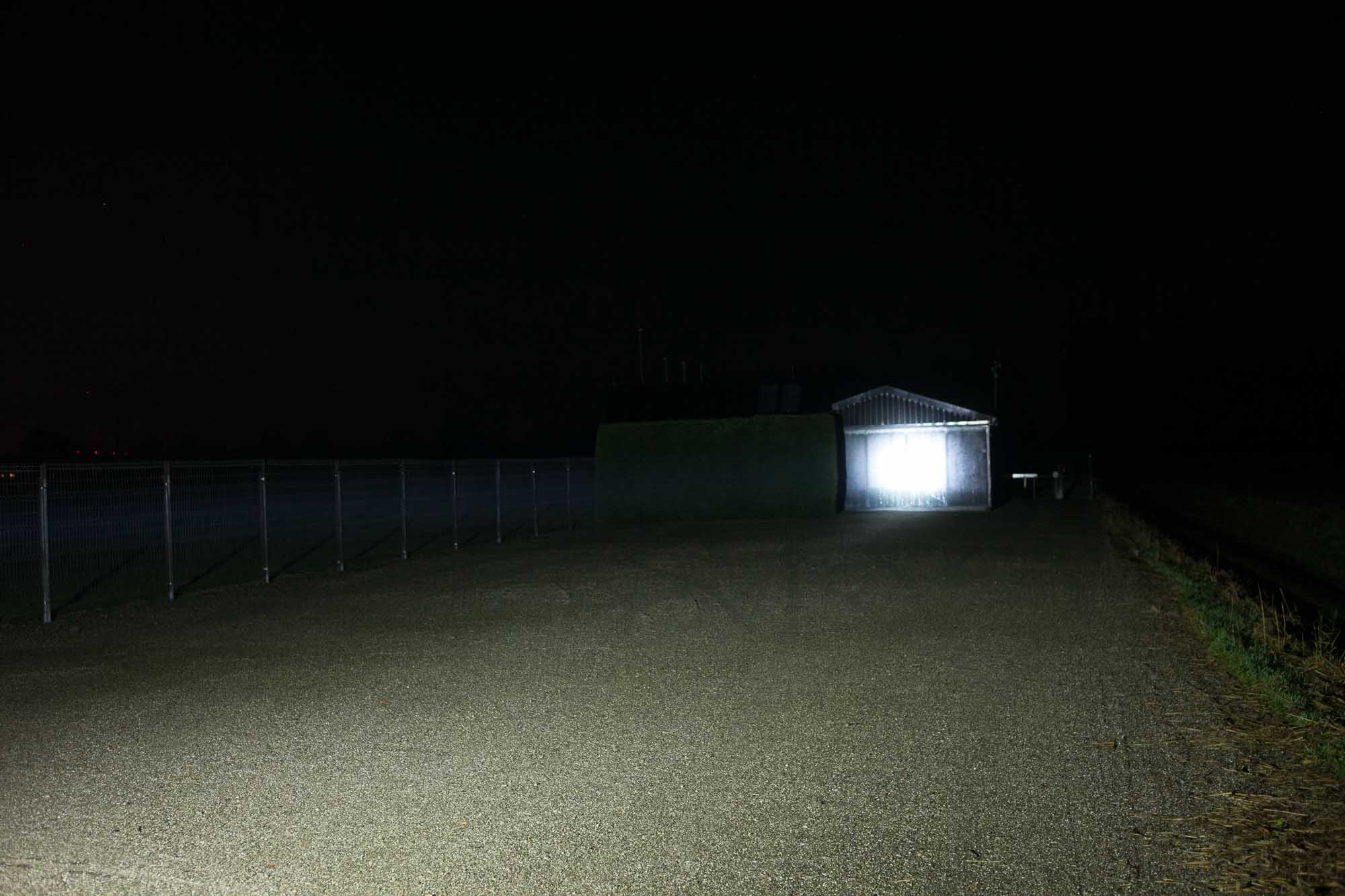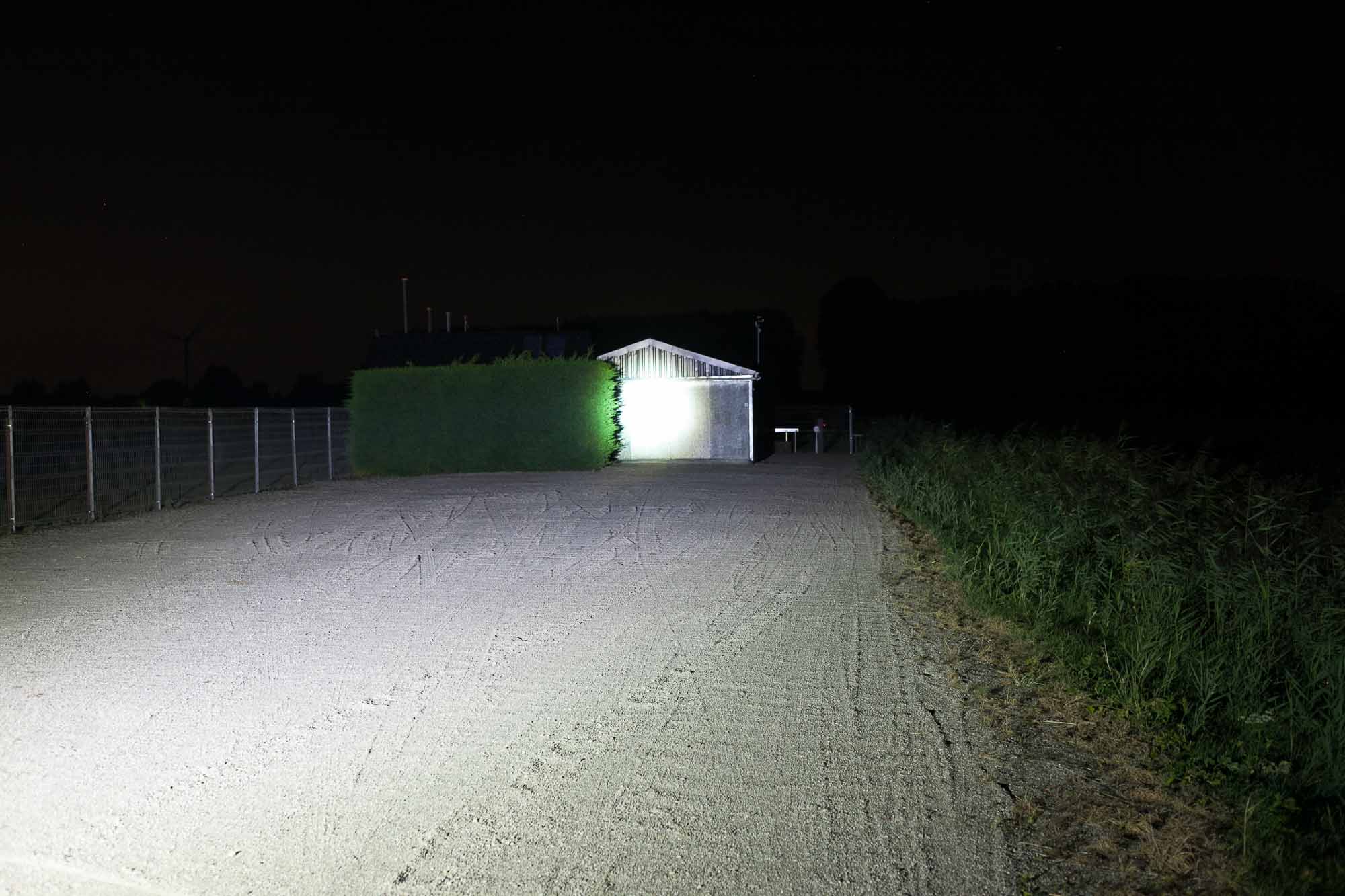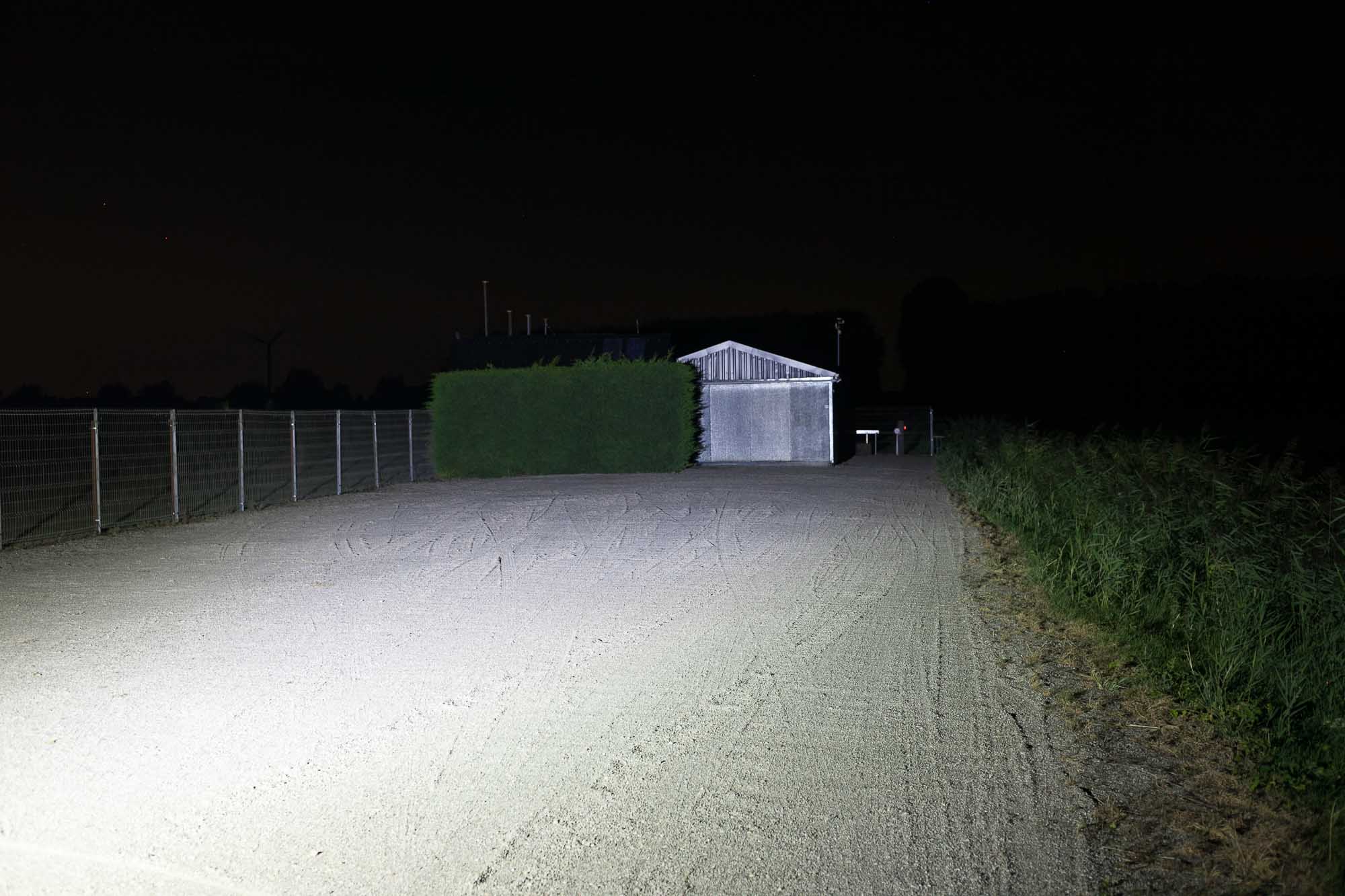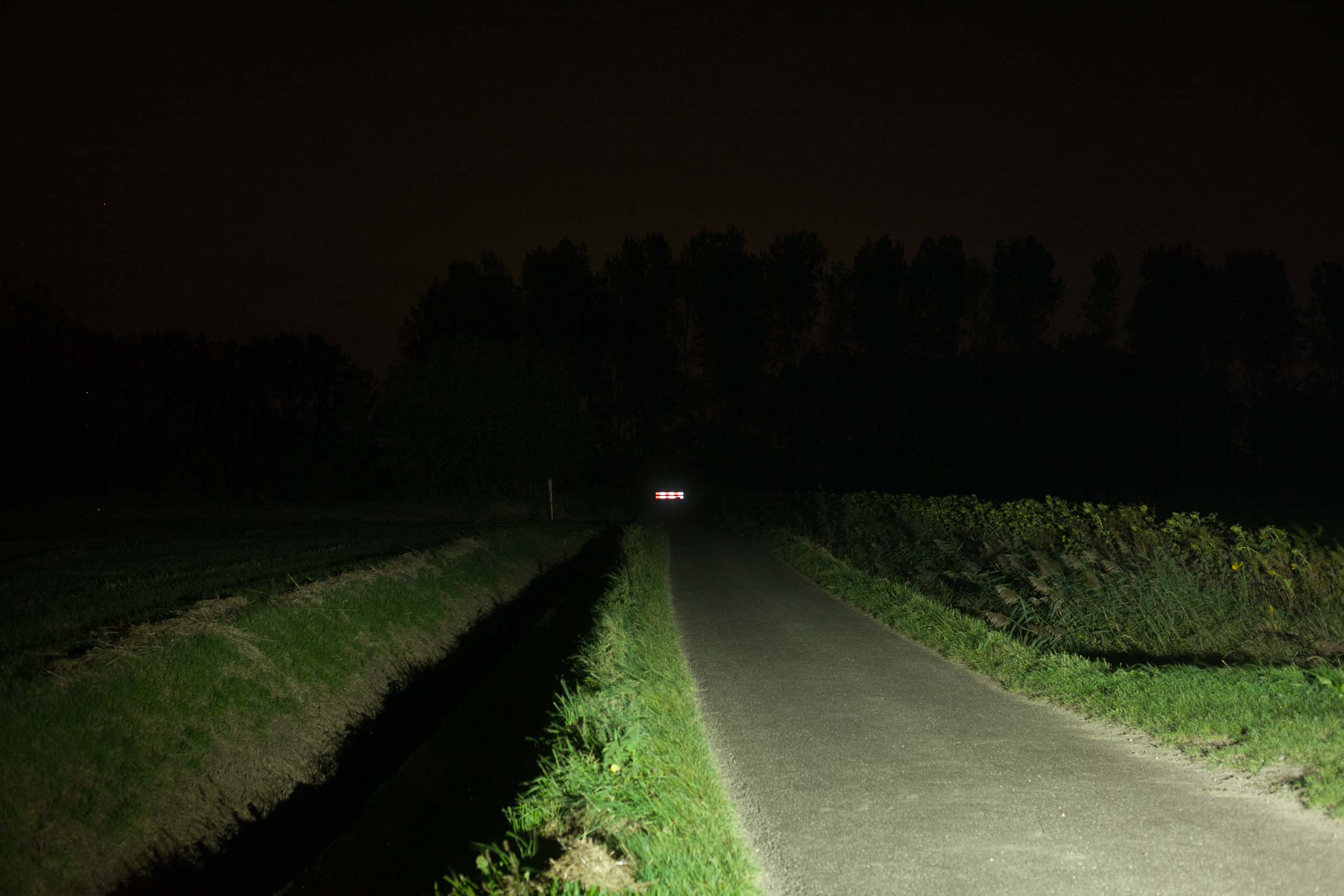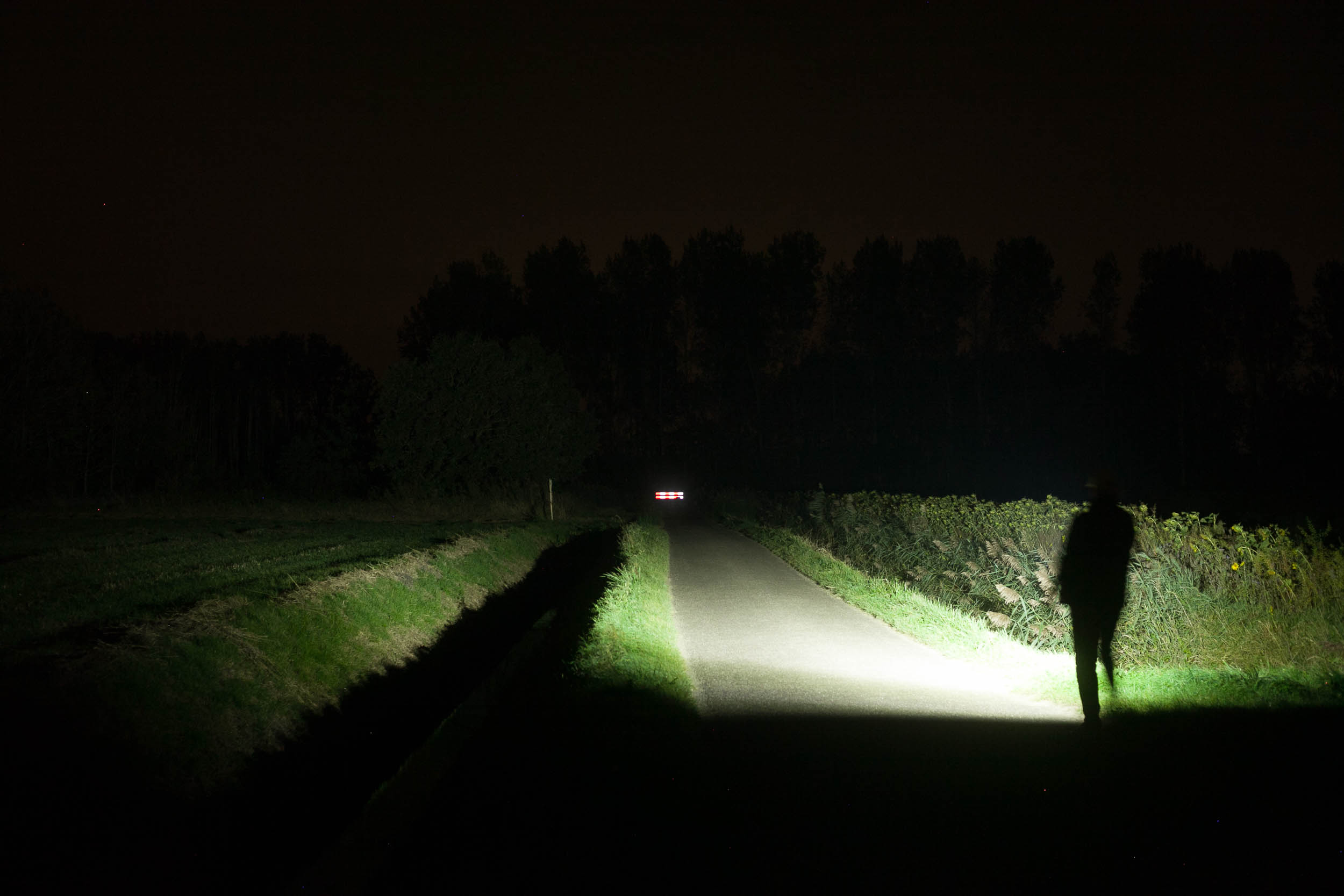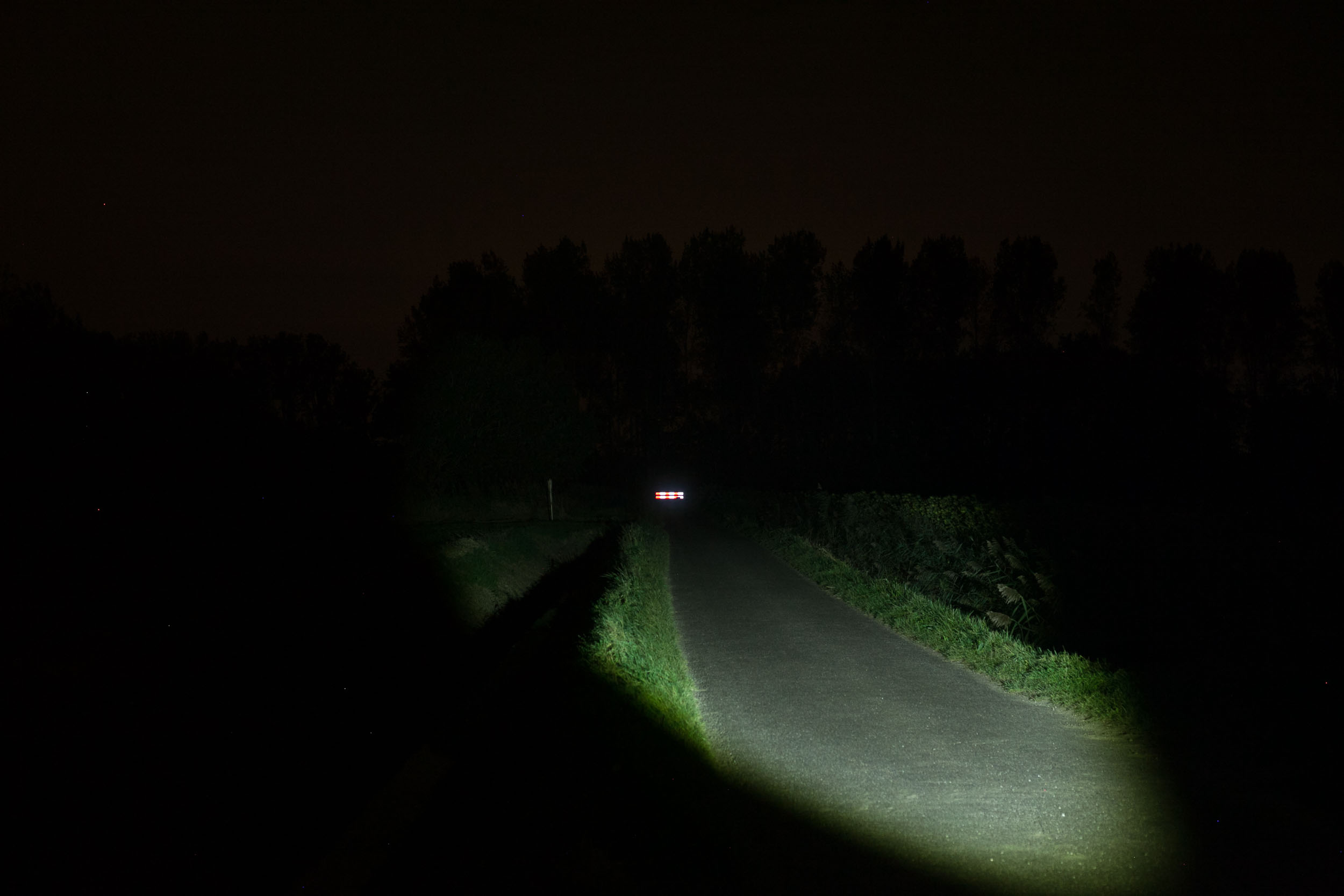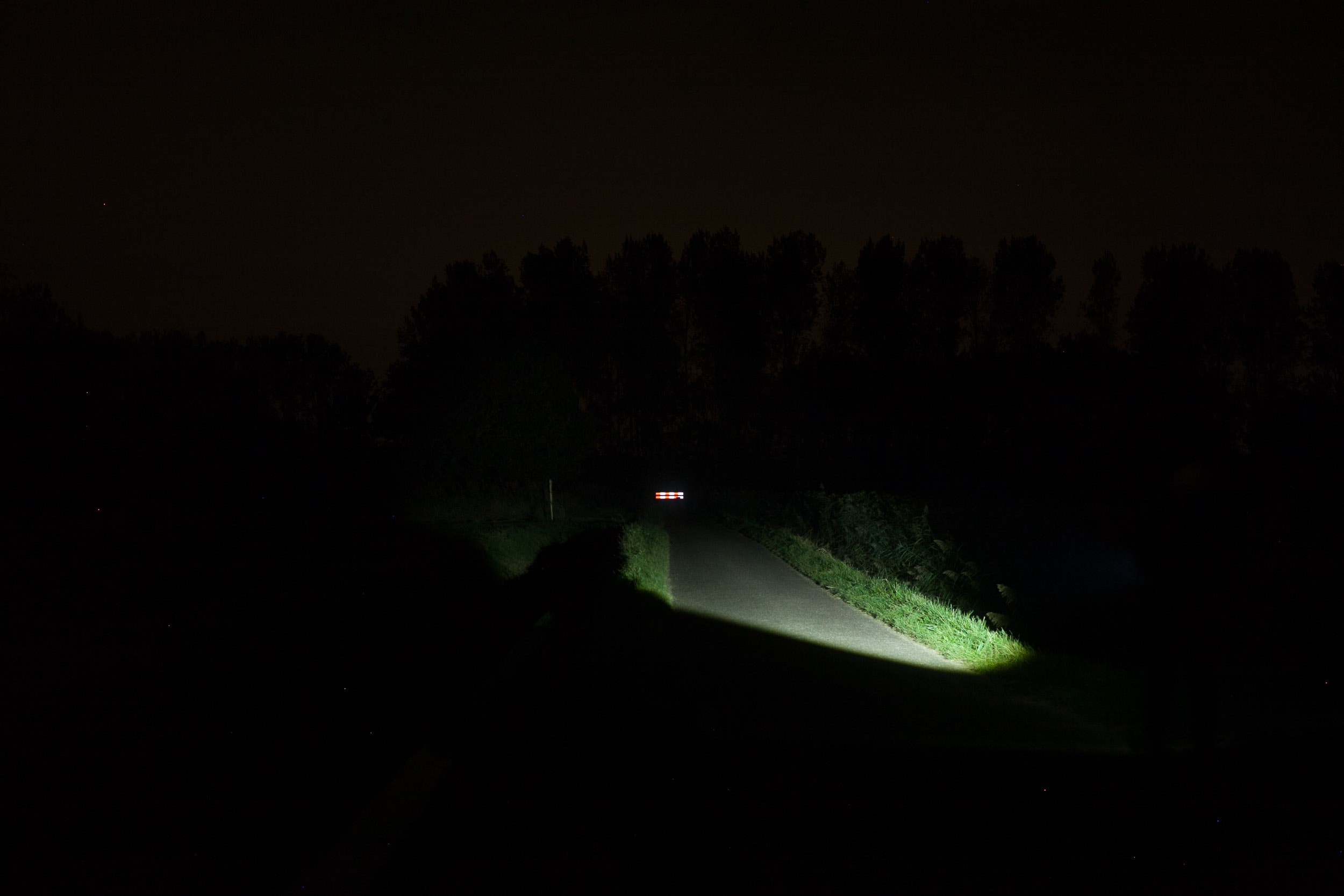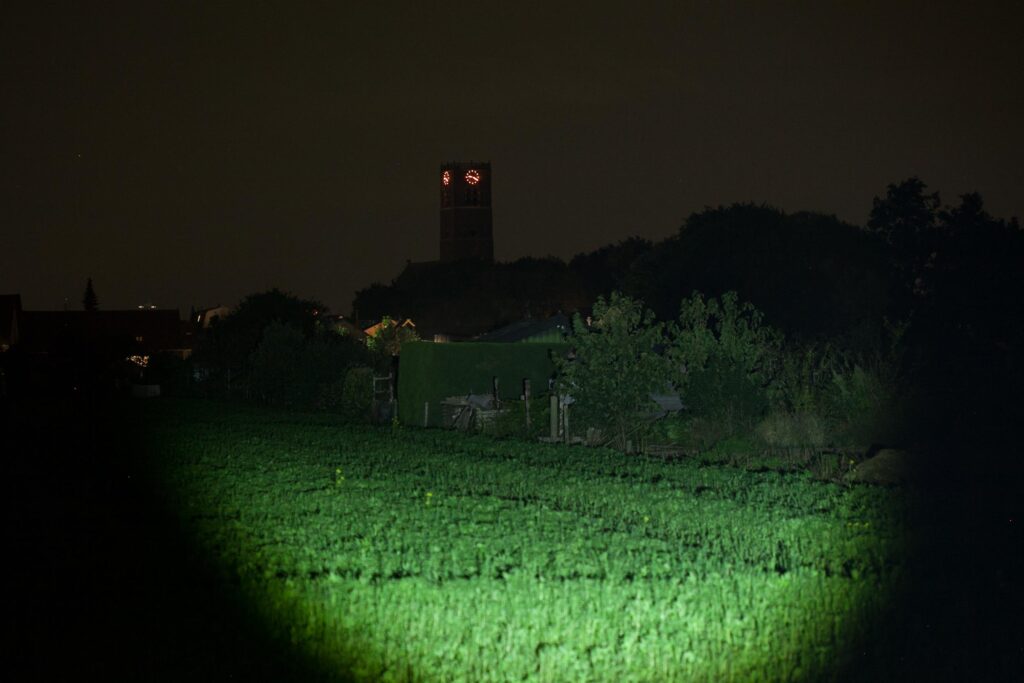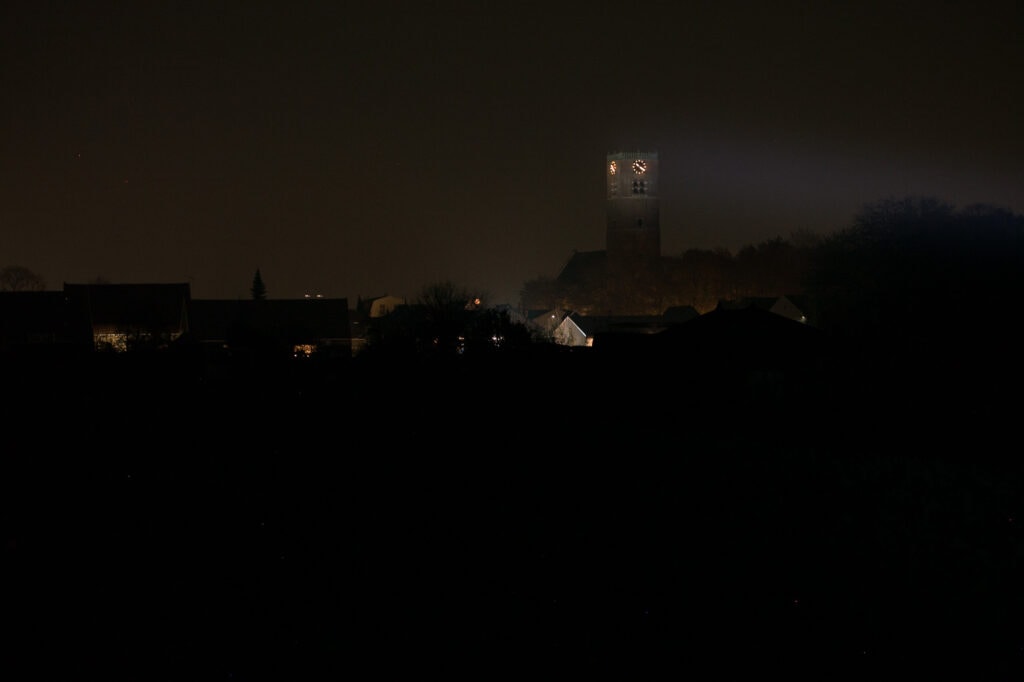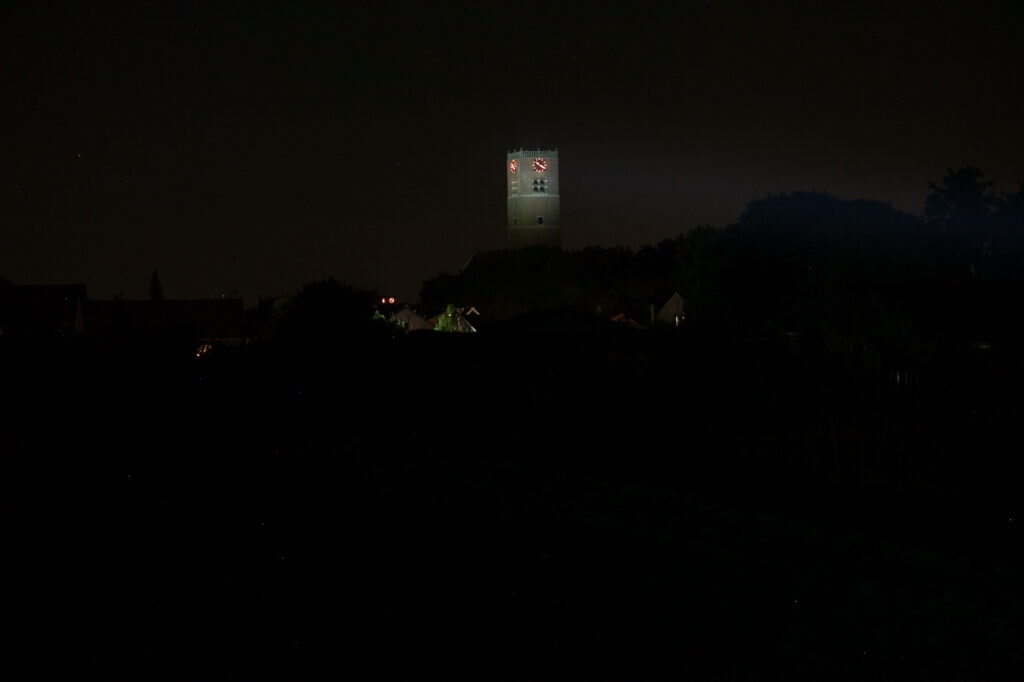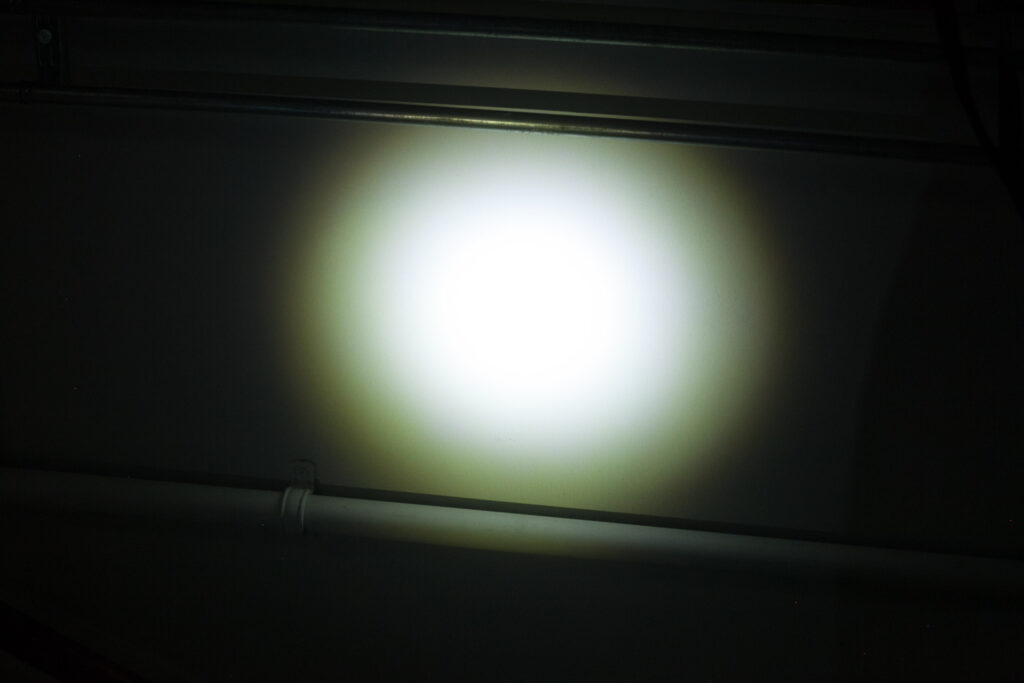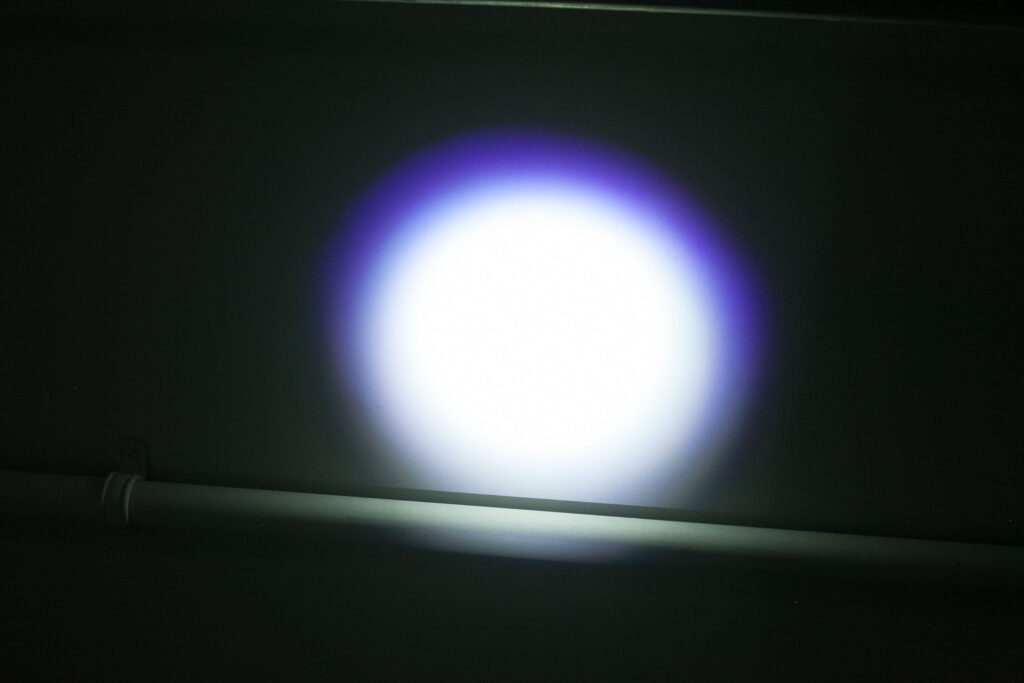1lumen selects and reviews products personally. We may earn affiliate commissions through our links, which help support our testing.
Acebeam Terminator M1 review
Acebeam Terminator M1 specifications
| Brand/model | Acebeam Terminator M1 |
|---|---|
| Flashlight category | EDC flashlight / Long-range / searchlight |
| LED+LEP | 3*LED + 1*LEP |
| Max. output | LED: 3,500 lm / LEP: 700lm |
| Max. beam distance | LED: 231m / LEP: 1600m |
| Max. beam intensity | LED: 13,340cd / LEP: 640,000 cd |
| Battery config. | 1*21700 |
| Onboard charging | N/A (battery has USB-C) |
| Modes | LED: 6 LEP: 3 |
| Blinkies | Strobe |
| Waterproof | IPX8 |
| Review date | October 2023 |
Review intro:
What would you say, if I said there are still not enough hybrid LEP flashlights on the market?
And what would you say, if I said there are not enough zoomable LEP flashlights on the market?
I guess you would agree?
Well, Acebeam knows this, so it is a delight to see they finally built one, that covers both. And they did it in style.
Without spending too much time here, let’s jump right in… but if you buy the M1, make sure to remove the plastic battery insulating disc before use.
Package quality.
First impressions are important, and the Terminator M1 is shipped in a stylish hard case. Inside the case you can find the following:
- Acebeam Terminator M1
- USB-C rechargeable 21700 battery (5100mAh)
- Lanyard
- Very short USB-C cable
- 2 spare o-rings
- Manual, warranty card, and a safety paper
Flashlight in use, Build Quality, and Warranty
Even though the first thing you see is the packaging, the flashlight itself looks also very good. The combination of a gray-ish coating, with white printing, and symbols, makes this a love at first sight.
The Terminator M1 doesn’t look like anything you’ve seen before, with a dual-head design, and the body made of 1 piece of aluminum. And according to Acebeam, manufacturing just 1 piece of the M1 takes about 1 hour.
Besides this very good satin-looking anodization, it fits right into the palm of your hand. Yes, it’s that small. In fact, it’s one of the shortest 21700 LEP flashlights on the planet.
Managing the m1 with one hand, including focusing the LEP beam is feasible. But operating it with two hand is much easier. And you could use it left-handed or right-handed, but right handed would be easier. Mainly because the switches are located on the left side of the flashlight. And it’s also easier to adjust the beam of the LEP when using it right-handed.
There are 2 switches, on top of each other. With the top switch for changing light source, and the bottom for power and mode changing. And what I also like about this, is that Acebeam made them even distinguishable by feel. The top (Function switch) is rounded, while the bottom (Power) is flat.
Yet, when the light is turned off, there is no way to know which light source is currently selected. So you won’t know whether it is the LEP or LED. That’s perhaps an area of consideration for Acebeam before they introduce the M2. Perhaps a solution would be a toggle switch like the Olight Marauder uses, or some indicator lights with an LED like the Lumintop Thor Pro uses. There are several ways to skin this cat.
There is no traditional knurling, and could feel a bit slippery, but it’s also pretty wide, so it shouldn’t slip out of your hands too easily.
Tailstanding is no problem, because both sides of the flashlight are flat. And if you want to carry it on your wrist, you can use the included lanyard.
When it comes to use cases, there are plenty. It’s basically an EDC-style flashlight with both a wide beam (LED) and throwy beam (LEP). And because of the size, I wouldn’t see a problem for carrying one in a jacket. There are just a multitude of other activities you could use it for, including camping, hiking, walking the dog, EDC, long-range, wildlife search, around the house and more.
It’s so versatile that it doesn’t fit in just 1 category.
When it comes to warrant, Acebeam
Warranty terms:
1. If the customer experiences any problems caused by manufacturing defects in normal use with an Acebeam product within 15 days of purchase, the dealer will replace that product.
2. If an Acebeam flashlight fails during normal use and any problem covered under warranty occurs within a period of 5 YEARS (60 months) of purchase, the dealer is responsible for warranty service.
3. Acebeam flashlights enjoy a limited lifetime warranty – after 60 months the dealer will attempt to repair the flashlight for the cost of spare parts and shipping (i.e. no charge for labour).
Please note:
A: This warranty applies to Acebeam flashlights, headlamps, bike lights and camping lanterns, excluding lanterns with built-in batteries, purchased after 1 May 2016;
B: LEP flashlights, rechargeable batteries, battery chargers, bike mounts, filters, remote pressure switches and lanterns with built-in batteries are warranted for a period of 1 year (12 months) from date of purchase;
C: Products purchased before 1 May 2016 and special offers may have different warranty terms;
D: The warranty does not cover damage or failure caused by:
– Rough usage or operation which does not comply with the user manual or product specifications;
– Battery leakage;
– Unauthorized disassembly, repair or modification;
– Defects or damaged caused by factors outside of Acebeam’s control.
LED, LEP, Lens, Bezel, Beam, and Reflector
The M1 is definitely quite unique in this regard. Not just because it is one of the few hybrid LEP flashlights, but also because the LEP beam is zoomable.
If you wonder which part of the flashlight is the LEP, and which is the LEDs, you don’t need to wonder anymore. The wider head, with zoomable ring is for the LEP, and the narrower for the LEDs.
From the front, you can see the 3 LEDs sitting behind a TIR optic. The type of LED is not distinguishable from here. And I’m not sure whether there is a protective glass in front of it.
And next to it, a dark looking lens, with the LEP deep inside. And you need to look up close to see the shine-through LEP module instead of the classic mirror-type LEP module.
The convex lens of the LEP has no protective lens either, and that’s probably another thing they could improve upon. But other than that, the setup is really nice.
Both bezels seem to be removable with the right tool, with the LEP bezel being flat, and the LED bezel a little crenulated.. if that is the right word here.
Then it’s time to talk and measure the beam.
So, let’s start with the LEDs. The one I am reviewing has the cool white LEDs, but it is also available with NW LEDs.
At first sight, the beam looks just a little greenish, but I usually don’t worry about it too much, since your eyes adjust to it in the dark. Especially if you have no other reference light source.
The TIR optics really help to make the beam look pretty smooth, and evenly lit. It’s a rather large hotspot, and not so much spill due to these optics used. I quite like this.
The beam of the LEP on the other hand is very small, and well defined, with basically no spill. And I’m also glad to write that it’s not green or yellow, and nor does it have any blue rings like some others.
Spectral measurements LED:
I used a Sekonic C-800 spectrometer to measure the flashlight at roughly 5 meters distance, indoors.
| Mode: | CCT: | CRI Ra: | duv |
|---|---|---|---|
| Turbo | 5871 K | 69.0 | 0.0036 |
| High | 5641 K | 69.0 | 0.0078 |
Dimensions and its competition
Dimensions:
| Acebeam Terminator M1 | Millimeters | Inches |
|---|---|---|
| Length | 104 mm | 4.1 in |
| Head diameter LEP | 35mm | 1.4 in |
| Head diameter LED | 28 mm | 1.1 in |
| Body width | 63 mm | 2.5 in |
| Battery tube diameter | 28 mm | 1.1 in |
Dimensions are rounded to the nearest millimeter, and to the nearest tenth of an Inch.
Weight:
| Acebeam Terminator M1 | Weight in grams | Weight in oz. |
|---|---|---|
| Without battery: | 229 g | 8.1 oz |
| With battery | 309 g | 10.9 oz |
Weight is rounded to the nearest gram, and to the nearest tenth of an Oz.
Acebeam Terminator M1 Flashlight comparison
Size compared to other (hybrid) LEP flashlights
Group 1, from left to right: Lumintop Petal, Loop SK01S, Acebeam Terminator M1, Mateminco FW3, Lumintop Thor 4.
The closest real competitor is the Lumintop Thor 4, which also has 1 battery, a dual head, but no focusable beam.
Acebeam M1 Terminator UI : User interface and driver
Each manufacturer that uses 2 light sources handle the UI differently. Some build UIs with a dedicated switch per light source. Some have only 1 switch that does everything, including power, mode switching, etc. However, having only 1 switch, it becomes very difficult to make a useful, and easy UI for both light sources.
Acebeam decided to use 2 separate switches, with 1 switch dedicated for toggling between light source, and the other for power, and mode switching. This, in my opinion, is much easier to make a good UI than everything with just with 1.
The available main modes:
- LED: Moon, Low, Med 1, Med 2, High, Turbo
- LEP: Low, High, Turbo
The available special modes (blinkies):
- Strobe for both LED and LEP
Function Switch
Acebeam calls it a function switch, to switch between LED and LEP. It’s the top switch.
How the UI works when the flashlight is still turned OFF with main switch:
- Single-click: to last used mode, it has mode memory
- Double click: Turbo
- Triple-click: strobe
- Press and hold: Moon
- Press and hold 5 seconds: lockout mode , repeat to unlock, and you see a blinking
How the UI works when the flashlight is turned ON:
- Half-press: Cycle through the menu from Low to High
- Single-click: turn off
- Double click: turbo
- Triple-click: strobe
- Press and hold: running through all modes from low to High (excluding Moon, and Turbo)
Shortcuts within the UI:
- To Turbo: double click from off/on
- To Moon: long press from off
- To Strobe: triple click from off/on
Mode memory:
- Yes. But no problem at all, because it has shortcuts to Moon and Turbo
Blinky modes:
- Yes, it has strobe. Can be activated by 3 clicks
Low battery warning:
- There is a battery indicator on the side of the M1.
- Green light: 20-100%
- Red: 10-20%
- Red flashing: 0-10%
I don’t really understand why green is between 20-100%.. that’s a very big range
Lock-out mode:
- You can lock it out, by a 5-second long-press (power switch) when the light is turned off
- When locked out: the battery light indicator on the side blinks red-green-red
PWM:
- Not visible by eye
Firmware / UI Conclusion:
I like the easy to use UI. With mode memory and shortcuts, and a secondary switch for changing light sources. I also like the fact that both switches feel differently. The power switch is flat, and therefore easy to distinguish from the Function switch, which is round. .
Acebeam M1 Terminator Charging and batteries
The backbone of every flashlight is its battery. Because whatever flashlight you have, without a good battery, it will not reach its full potential, and compromise on functionality and reliability.
Big flashlight companies therefore, provide batteries with their flashlight. And whatever you think of that, they tend to be of very high quality.
Acebeam included a 21700 type battery with USB-C port. The product name is IMR21700NP-510A Type-C, with a capacity of 5100mAh. It arrived at 3.81V, which is a good and safe Voltage for shipping and long-term storage. But after each runtime test, the battery is anywhere between 2.67V and 2.90V. That is quite low, but still okay.
They also provided a USB-A to USB-C charging cable, but you can also use USB-C to USB-C cables. While charging the battery, a small red light is visible next to the positive terminal. And the total charge time I measured was 2 hours and 36 minutes.
However, you don’t need to use Acebeam 21700 batteries, because it will also work with other brands, and even flat top, unprotected cells. But if you use short, unprotected cells, the flashlight will lose connection if you bump it against something. Not side ways, but when you hit the front or rear with the palm of your hand.
| Charge type | Fits | No fit | Charge time |
|---|---|---|---|
| Battery with onboard USB-C | All 21700 sizes | – | 2h 36min |
Performance test
This is the gear I use for testing:
| Gear | Purpose | Link to buy |
|---|---|---|
| Hagner E4-X | Measuring beam intensity (throw) | Inquire at Hagner.se |
| 2* Extech SDL400 | Lumens and logging runtimes | Amazon.com, Amazon.co.uk, |
| Leica Disto D2 | Distance for throw measurements | Amazon.com, Amazon.co.uk, |
| Sekonic C-800 | Spectrometer for LED measurements | Amazon.com, Amazon.co.uk |
| Uni-T UTi260B | Thermal Image camera | Amazon.com, |
Lumen measurements:
How Lumens are Measured: Understanding ANSI FL1 Standards How Lumens are Measured: Understanding ANSI FL1 Standards: The ANSI FL1 standards specify that output in lumens should be measured 30 seconds after turning on, as this is the standardized time for measuring brightness according to the industry standard. This is why we focus on this part in our measurements. The ANSI FL1 standards require an ambient temperature of 22 ± 3°C. We record the ambient the ambient temperature to identify potential reasons for any observed discrepancies.The output measurements in this review are based on my homemade integrating spheres, each equipped with an Extech SDL400 Lux Meter. For consistency and accuracy, a calibration light (Convoy S2+ with 249lm and a Convoy S2+ with 261lm) is measured prior to each set of lumen measurements.
For high-output lights, one of the lux meters uses an ND camera filter to prevent the lux meter to max out. This is either the Kenko PRO1D ND16 up till about 80,000 lumens or Gobe ND32 for anything above.
All of my readings were taken from a fully-charged Acebeam IMR21700NP-510A. I didn’t recharge the battery between the lowest 3 LED modes, but then I recharged it for every higher mode.
The measurements were taken manually at turn on and 30 seconds. The 10 minute numbers are taken from the runtime graph.
First the LED measurements:
| Mode | Specified | Measured at 0 sec | 30 sec | 10 min. |
|---|---|---|---|---|
| Moon | 1 lm | 1 lm | 2 lm | – |
| Low | 50 lm | 125 lm | 124 lm | – |
| Med1 | 150 lm | 208 lm | 207 lm | 206 |
| Med2 | 500 lm | 551 lm | 548 lm | 542 |
| High | 1000 lm | 1117 lm | 1104 lm | 1076 |
| Turbo | 3500 lm | 2593 lm | 3744 lm | 1055 |
Please note that for the runtime graph, I wrote down the highest output number as the first measurement, instead of the actual measurement. The reason being: I would miss the highest output measurement if I didn’t do that, but the measurement interval is every 5 seconds. The highest output is within the first 2 seconds after turn on, and not at turn on. You can see that the measurement at 0 sec is much lower than at 30 sec in the table above.
Then here are the numbers for the LEP module, zoomed in:
| Zoomed-in Mode | Specified | Turn on | 30 sec | 10min |
|---|---|---|---|---|
| Low | 100 lm | 62 lm | 62 lm | 59 lm |
| High | 250 lm | 175 lm | 174 lm | 169 lm |
| Turbo | 700 lm | 387 lm | 491 lm | 221 lm |
These numbers don’t really come close to what I measured.
And also, zoomed out (wide beam). I didn’t do runtime graphs for the wider beam, as that seemed pointless, since I already did the ones, zoomed in.
| Zoomed-out Mode | Specs | Turn on: | 30 sec: |
|---|---|---|---|
| Low | 50 lm | 43 lm | 43 lm |
| High | 150 lm | 117 lm | 116 lm |
| Turbo | 400 lm | 194 lm | 331 lm |
Acebeam Terminator M1 Battery life and runtime
How Runtimes are Measured: Understanding ANSI FL1 Standards About ANSI FL1 runtime standards: The runtime is measured until the light drops to 10% of its initial output (30 seconds after turning on). This does not mean that the flashlight is not usable anymore. The last column shows how long the light actually works till it shuts off. If there is a + symbol, it means that the test was stopped at that particular point, but the light was actually still running. This happens on certain occasions, with certain drivers, firmware, or batteries.Runtime tests were conducted in my 50cm home made integrating sphere, paired with the Extech SDL400 data logging Lux Meter.
First the LED modes;
| Mode | Specified runtime | Measured runtime (ANSI FL1) | Time till shut off |
|---|---|---|---|
| Moon | 2.8 days | – | – |
| Low | 22h | – | – |
| Med 1 | 14h | 12h 42min | 12h 42min |
| Med 2 | 5h 30min | 5h 27min | 5h 27min |
| High | 2h 50min | 2h 46min | 2h 46min |
| Turbo | 2h 42min | 2h 33min | 2h 33min |
My runtimes were a little shorter than specified, but Med1, Med2, and High also measured higher than specified. So I guess that makes sense.
And then the LEP modes:
| Mode | Specified runtime | Measured runtime (ANSI FL1) | Time till shut off |
|---|---|---|---|
| Low | 5h 30min | 5h 45min | 5h 45min |
| High | 2h 30min | 2h 38min | 2h 38min |
| Turbo* | 1h 52min | 2h 02min | 2h 02min |
They almost look like a timed stepdown (2 minutes) instead of a thermal controlled stepdown.
Acebeam Terminator M1 Peak beam intensity and beam distance measurements
About Peak beam intensity: Understanding ANSI FL1 Standards About peak beam intensity The calculated value of distance in meters at which the flashlight produces a light intensity of 0.25 lux. (0.25 lux is about the brightness of a full moon shining on an object). This means that the intensity has decreased so much, it becomes difficult to see darker objects, or objects that don’t reflect light. The columns ‘Meters’ and ‘Yards’ use rounded numbers.Measurements were taken indoors with a Hagner E4-X Lux Meter. The measurements were taken 30 seconds after turn on.
First the LEP measurements at 5 meters and 20 meters.
| Mode | Specified | I measured: | Meters | Yards |
|---|---|---|---|---|
| (5m)Low | 105,625 cd | 85,000 cd | 583 m | 638 yd |
| (5m)Med | 245,025 cd | 230,000 cd | 959 m | 1049 yd |
| (5m)High | 640,000 cd | 622,500 cd | 1578 m | 1726 yd |
| (20m)low | 105,625 cd | 84,000 cd | 580 m | 634 yd |
| (20m)med | 245,025 cd | 228,000 cd | 955 m | 1044 yd |
| (20m)high | 640,000 cd | 584,000 cd | 1528 m | 1671 yd |
You notice that the 20 meters measurements are slightly lower than the indoor measurements. But since I measure all LEP flashlights outdoors at 20 meters, I will focus on those. But even indoors, they didn’t reach the claimed beam intensity, but it was relatively close.
LED modes:
| LED Mode | Specified | I measured | meters | yards |
|---|---|---|---|---|
| Moon | – | 0 cd | 0 m | 0 yd |
| Low | – | 300 cd | 35 m | 38 yd |
| Med | – | 500 cd | 45 m | 49 yd |
| Med 2 | 3,481 cd | 1,300 cd | 72 m | 79 yd |
| High | 5,041 cd | 2,600 cd | 102 m | 112 yd |
| Turbo | 13,340 cd | 9,250 cd | 192 m | 210 yd |
Let’s compare it to other single cell, LEP flashlights
LEP flashlight comparison: small LEP flashlights (< 40mm)
A comparison list with single-cell LEP flashlights we reviewed: These numbers are NOT from the specifications but measured by our reviewers. They include all single-cell LEP flashlights with a smaller diameter head (smaller than 45mm). The numbers include the measurement in lumens (lm), measure candela (cd), and calculated distance in meters, and yards. These numbers are all measured 30 seconds after turning on.
| Flashlight | @30sec (lm) | Candela (cd) | Meters | Yards |
|---|---|---|---|---|
| Acebeam W10 gen2 | 474 | 496,000 | 1409 | 1540 |
| Fenix TK30 | 493 | 384,000 | 1239 | 1355 |
| Fenix HT30R | 474 | 700,000 | 1673 | 1830 |
| Jetbeam M2S WP-RX | 354 | 345,000 | 1175 | 1285 |
| Jetbeam RRT M2S Raptor | 365 | 248,000 | 996 | 1089 |
| Lumintop Thor 1 | 323 | 356,000 | 1193 | 1305 |
| Lumintop Thor 2 | 324 | 888,000 | 1888 | 2065 |
| Lumintop Thor 2 v2 | 297 | 752,000 | 1734 | 1897 |
| Maratac LEP DX Reach rev. 2 | 291 | 396,000 | 1259 | 1376 |
| Nextorch L10 Max | 421 | 440,000 | 1327 | 1451 |
| Nextorch T7L | 524 | 428,000 | 1308 | 1430 |
| Nextorch T10L | 468 | 484,000 | 1391 | 1522 |
| Olight Odin Turbo | 379 | 368,000 | 1213 | 1327 |
| Richfire SFC-039 | 194 | 197,896 | 890 | 973 |
| TrustFire T30R | 105 | 147,500 | 768 | 840 |
| Weltool W3 Pro | 478 | 363,000 | 1206 | 1319 |
| Weltool W3 PRO TAC | 1017 | 583,600 | 1528 | 1671 |
Interactive runtime graphs below
Below are interactive throw comparison graphs (candela), between single-cell LEP flashlights with a small head (+-<40mm). Hover your mouse over the interactive graph below to see the details of each specific light.
(tip: hold your mobile phone horizontally to see the full graph). Or check this link to view the full interactive graph.
Same, but then focused on the first 30 minutes. Or open new window for 30min interactive graph here.
And now zoomed in to see the details. Or open the following link for the interactive graph.
Beamshots
For the following LEP beamshots, I used a Canon EOS 5D mk2 with a 100mm lens. Manual settings: ISO1600, 0.5sec, F4, 5000K
The tower is about 450 meters / 492 yards away
For the following LED beamshots, I used a Canon EOS 5D Mk2 with a 50mm lens. Manual settings: ISO1600, 1/4sec, F4, 5000K
The shed is about 65 meters / 71 yards away, and the reflective fence about 200 meters.
Compare the beamshots from the following 2 hybrid LEP flashlights:
- Acebeam Terminator M1
- Lumintop Thor 4
- Nitecore P35i
There are other hybrid LEP flashlights, but they are either not the same size (Nebo Luxtreme, Lumintop Thor Pro) or the secondary light source are AUX LEDs (Mateminco FW3), and no normal LEDs. Even the Nitecore P35i is much bigger, but uses a single cell as well.
Please note that beamshots are mainly intended to showcase the beam pattern and beam quality, rather than overall performance. These images are typically taken directly after activation, and do not fully represent its overall performance. For accurate performance metrics, such as output, beam distance, and runtimes, you need to look at the performance section of this review.
The following images show the beam at about 5-6 meters distance. The M1 has a very distinct hotspot with a very short transition from hotspot to the most outer ring. This is the tightest beam I could get.
Disclaimer: This flashlight was sent to us for review at no cost by Nealsgadgets. We have not been paid to review, nor have we been holding back on problems or defects.
Final Verdict
Pros
- Great and nice looking coating
- Unique build and design
- Dual light source
- Available with NW and CW LEDs
- One of the shortest 21700 LEP flashlights
- Secondary switch to switch between light sources
- Focusable LEP beam
Cons
- Strobe isn’t really necessary on an LEP flashlight
- No protective glass lens
- No indication what light source is selected when flashlight is off
- Output drops after 2 minutes
Explanation on star ratings:
1: Avoid: my phone flashlight would be a better choice – 2: Poor: significant defect or issues; almost unusable – 3: Average: some defects or issues; but still usable 4: Good: recommended (minor issues) – 5: Great: highly recommended
4.5 stars: ★★★★⋆
While our star rating provides a reliable indicator, we encourage you to read the full review to make an informed decision based on your own needs and preferences.
There are not many real hybrid LEP flashlights, and even fewer that have a focusable LEP light source. Well, there is actually none, except for this Acebeam M1!
The M1 is a very uniquely designed flashlight with 6 output levels for the LED, and 3 output levels for the LEP side. And Turbo mode for LEP is a unnecessary in my opinion.
Having 2 switches makes it easy to use, and switch between light sources. And the UI is pretty straightforward with a long press from off, for its lowest mode, and double click for Turbo. But there is no indicator to show what light source is active when the light is turned off. This could be something to add in their next hybrid LEP flashlight.
Other than that, this is a very unique, small, and cool flashlight that I can highly recommend to anyone who is looking for a hybrid LEP, and especially if you enjoy a focusable LEP. Can there be any improvements, for sure.
Buy your Acebeam Terminator M1 with a discount
You can use 1Lumen711 for 15% off. Our 25% off coupon will not work for this particular light.
1lumen selects and reviews products personally. We may earn affiliate commissions through our links, which help support our testing.
